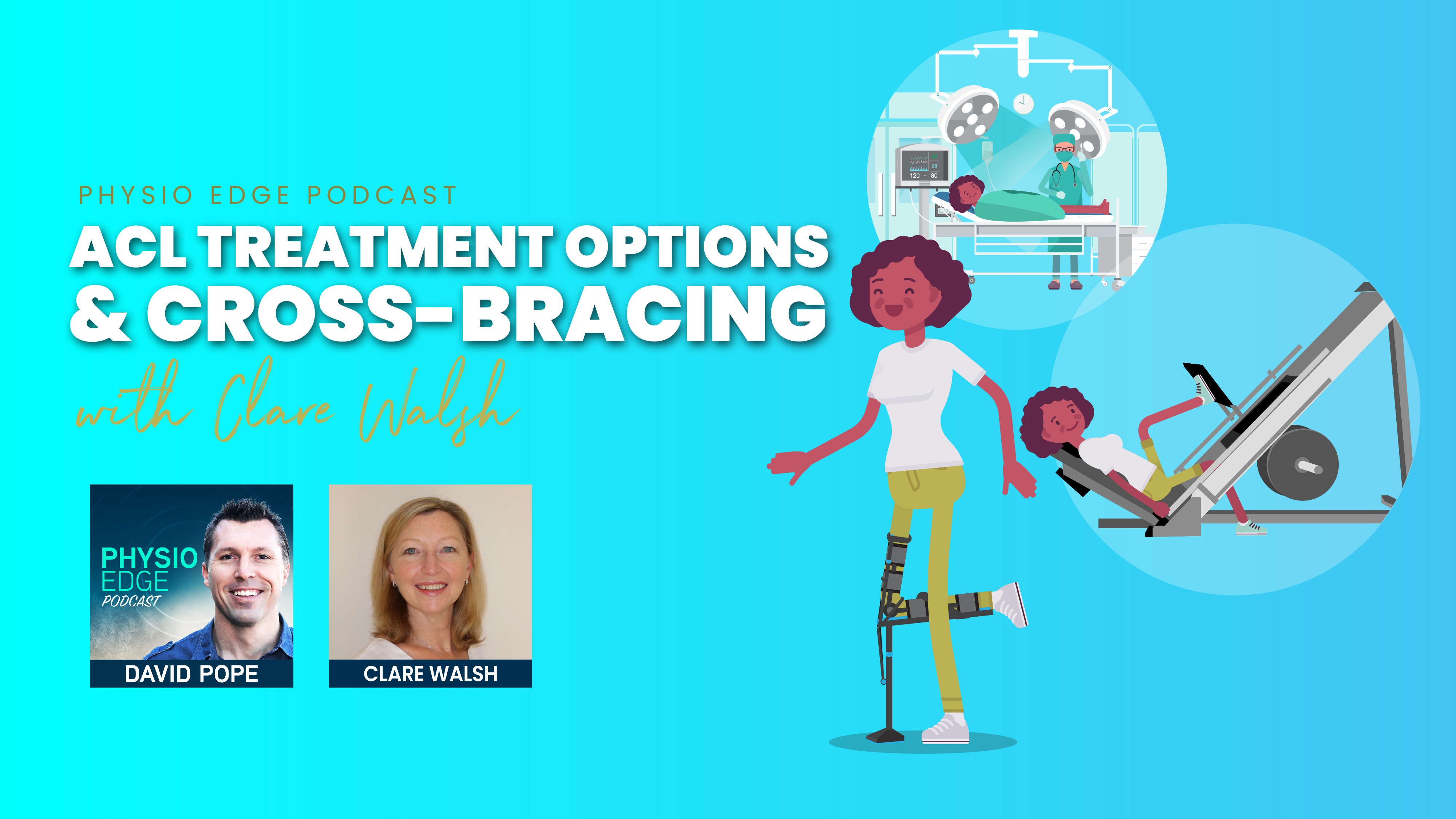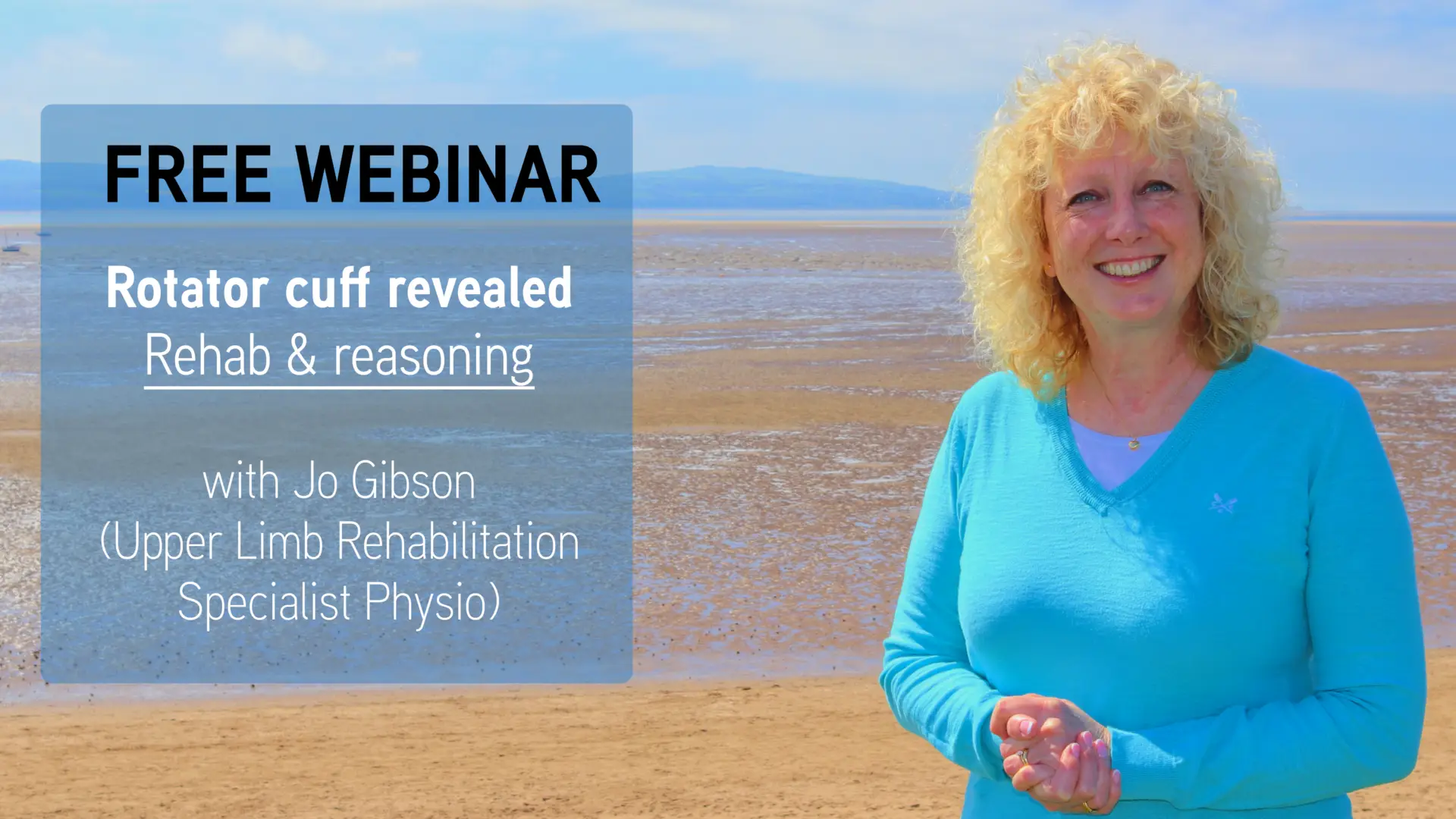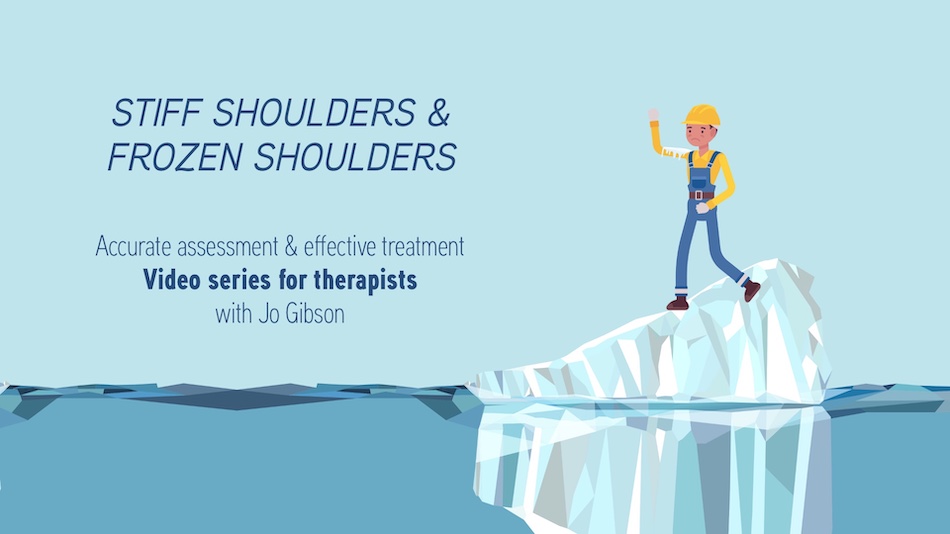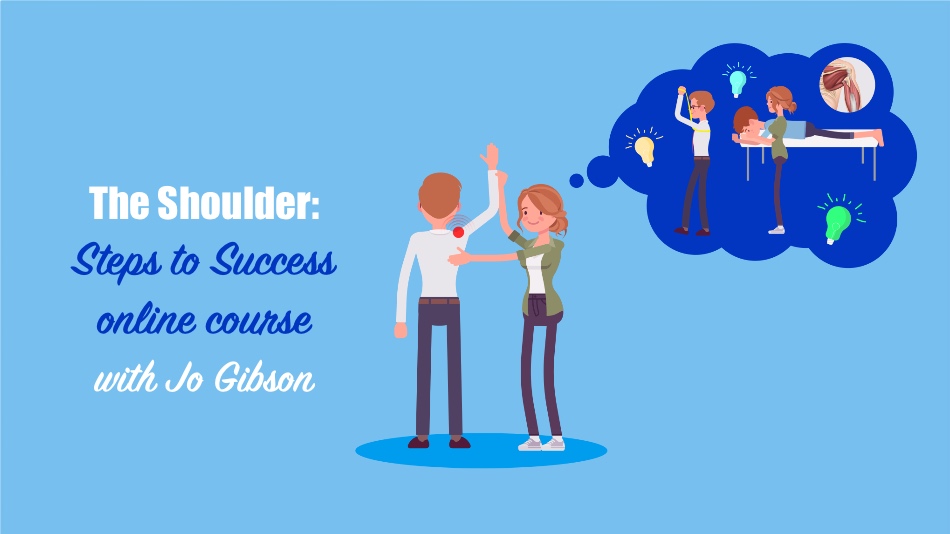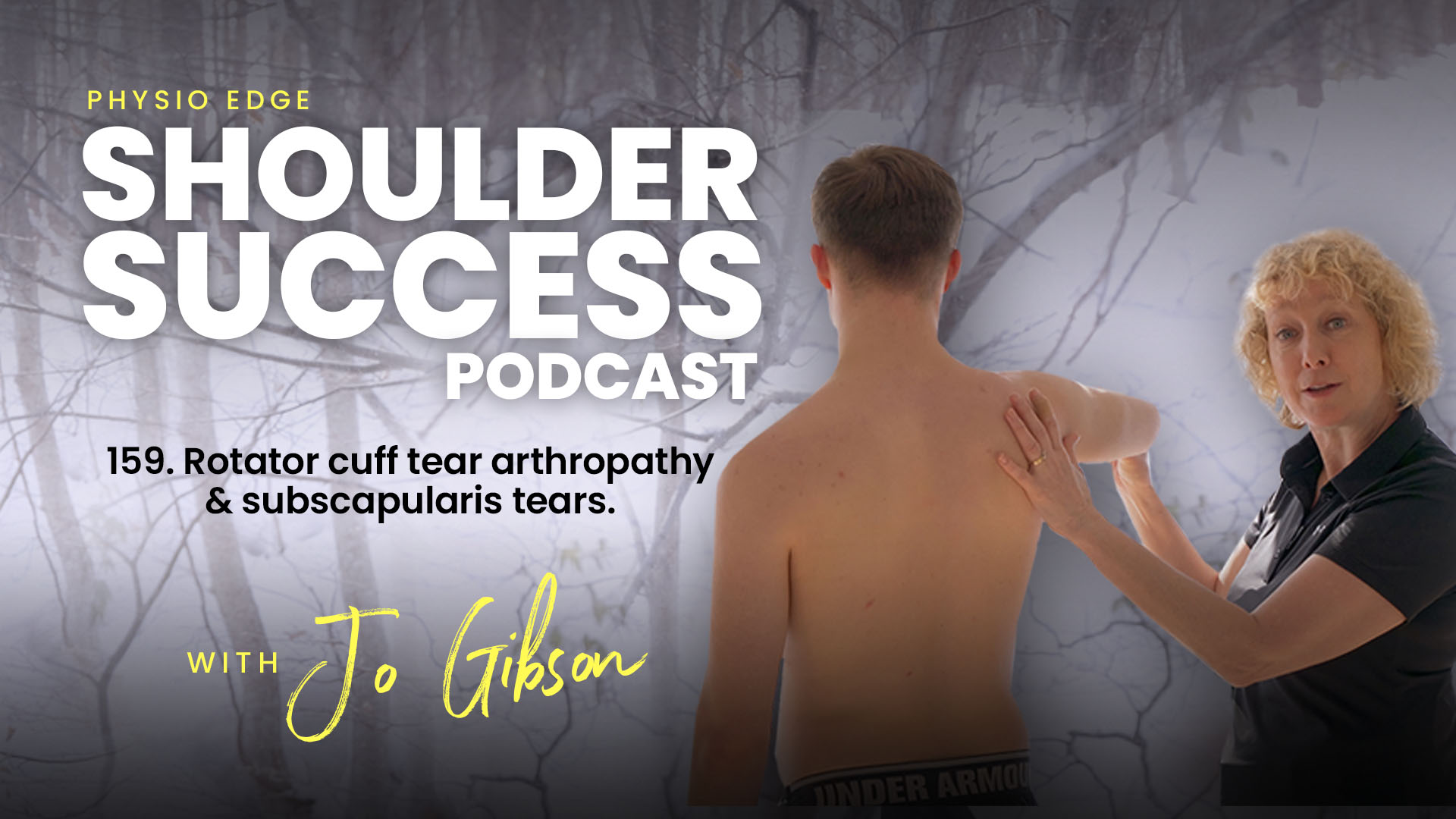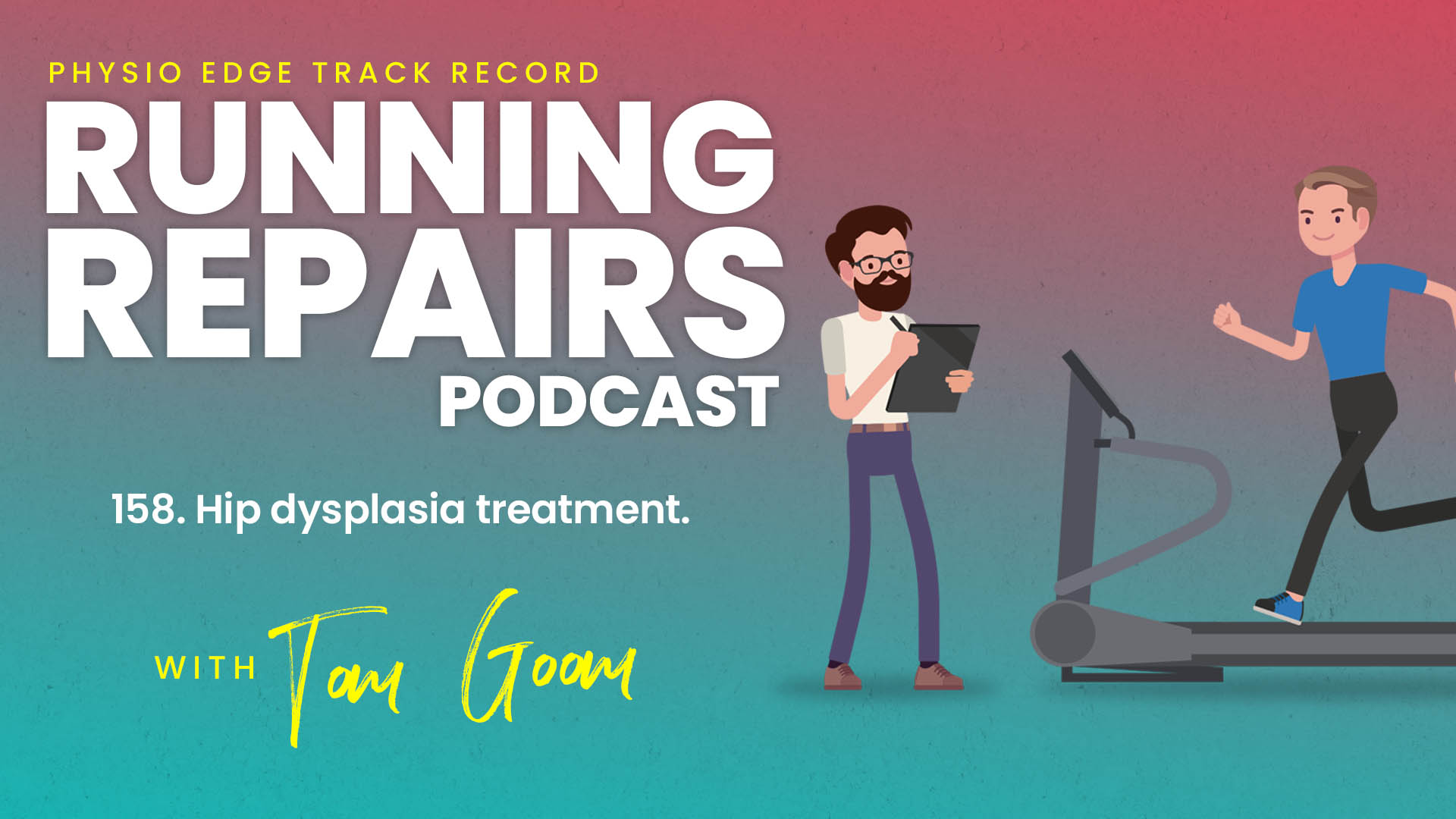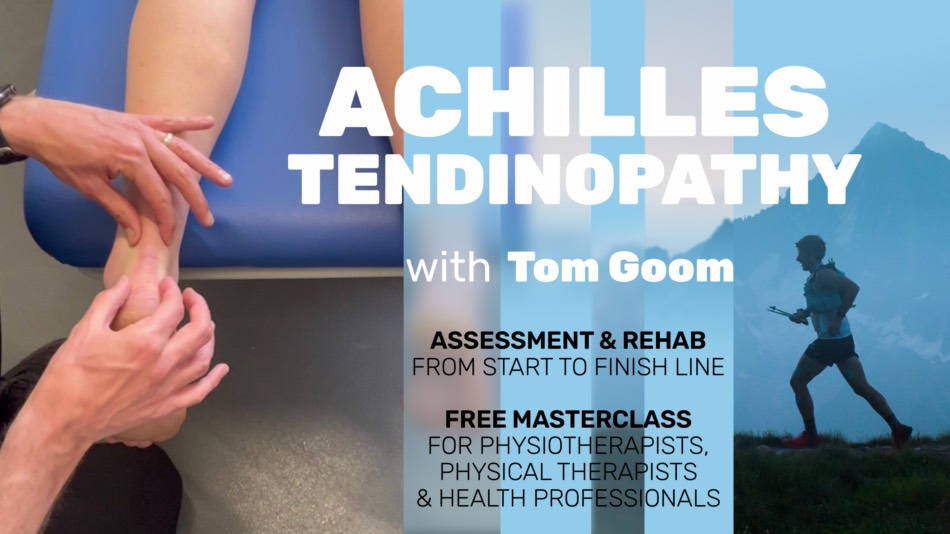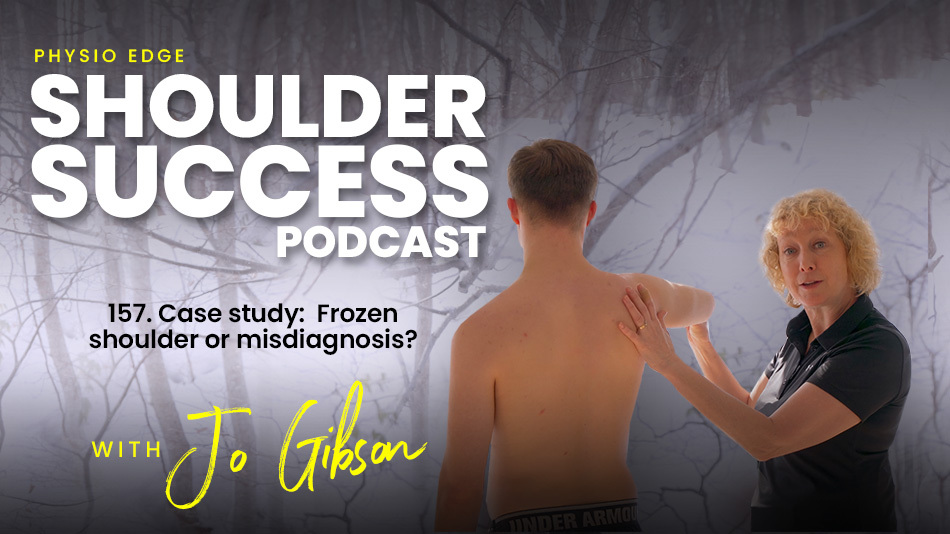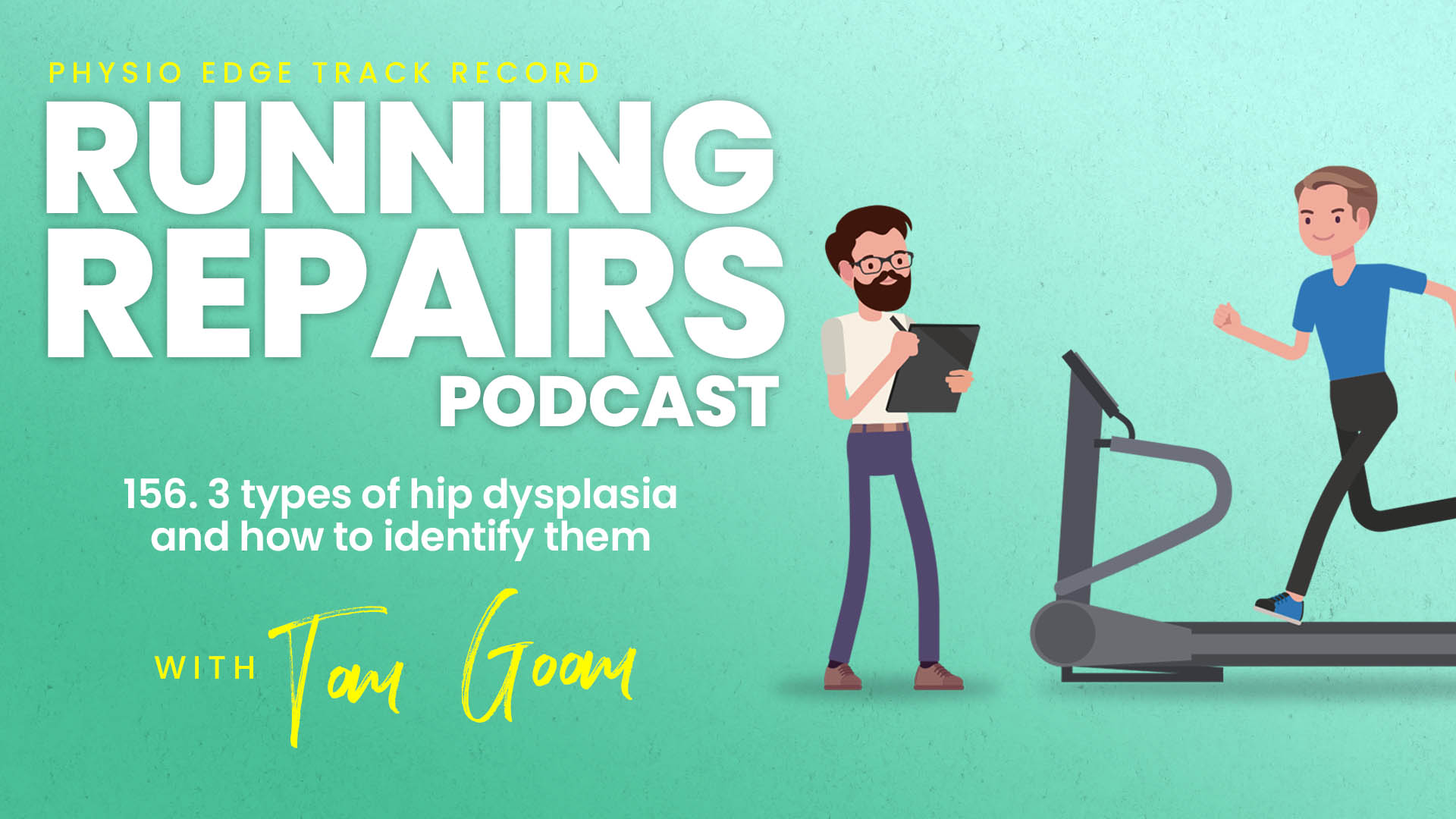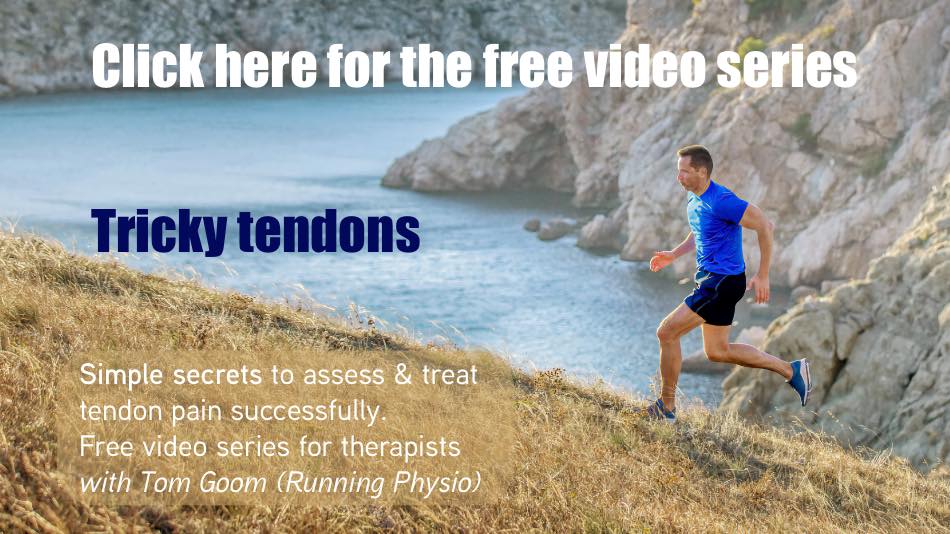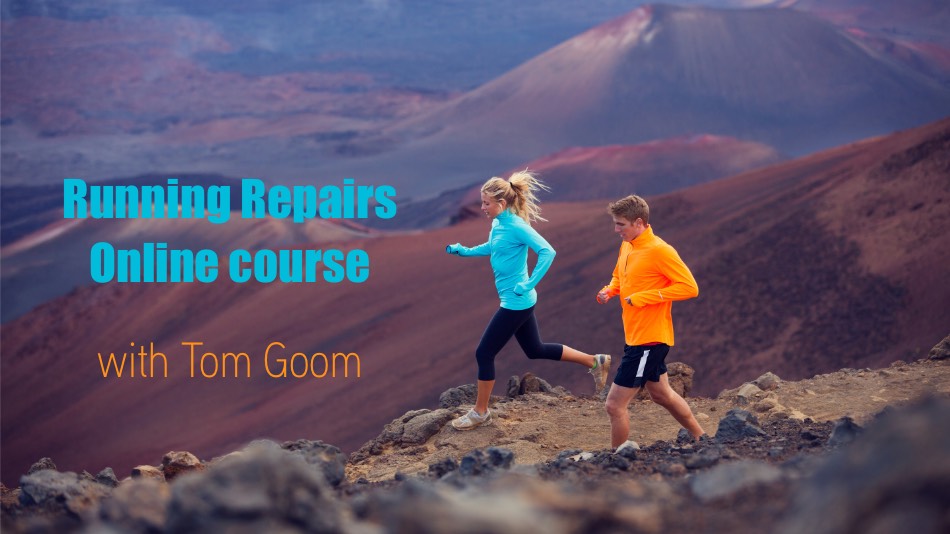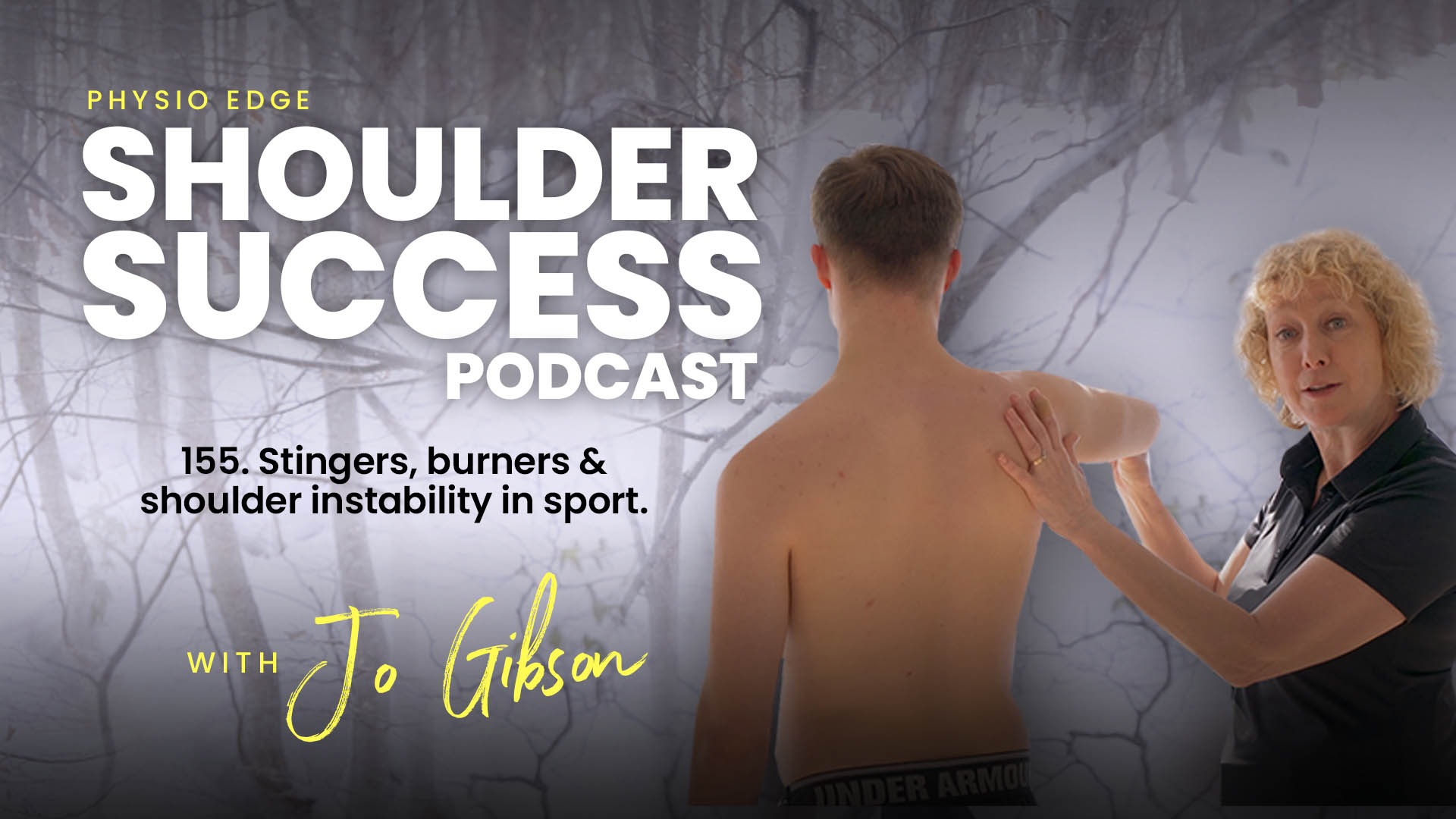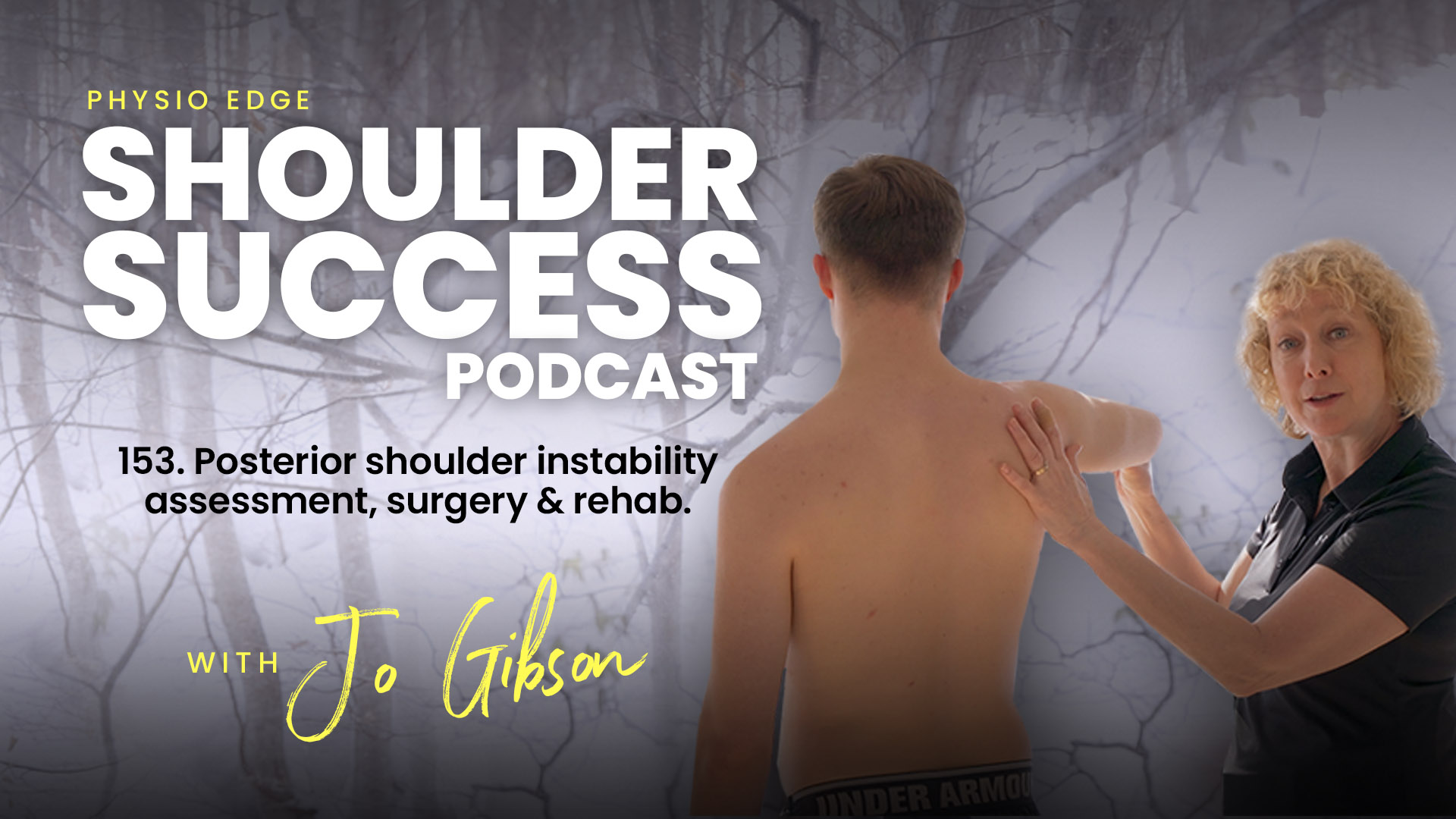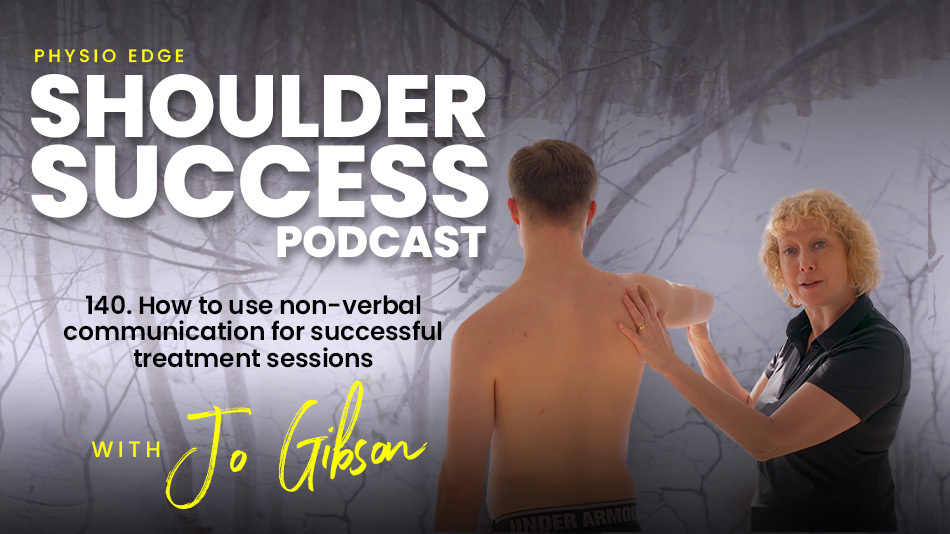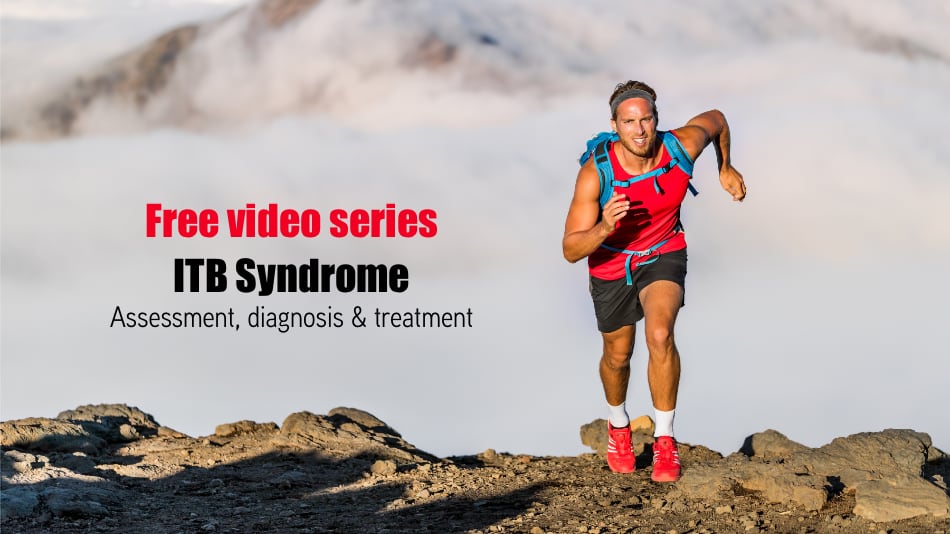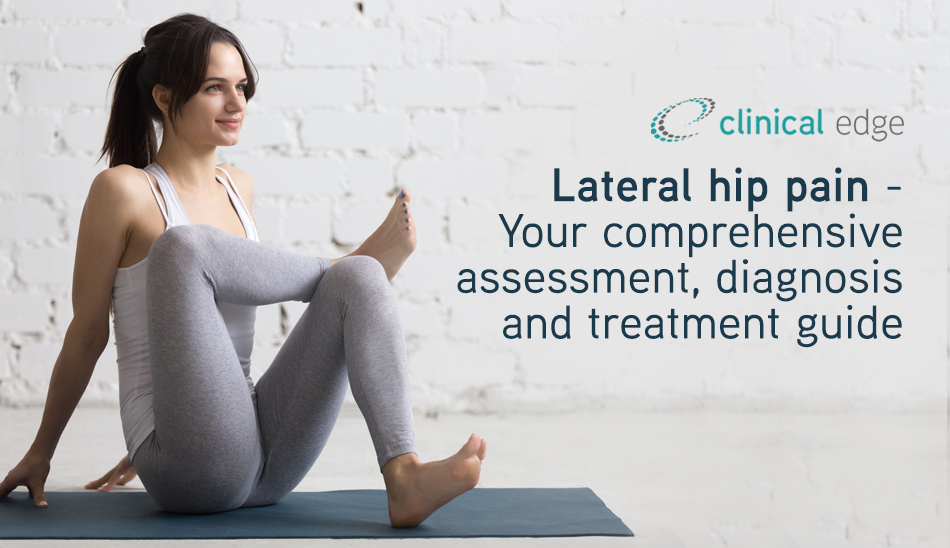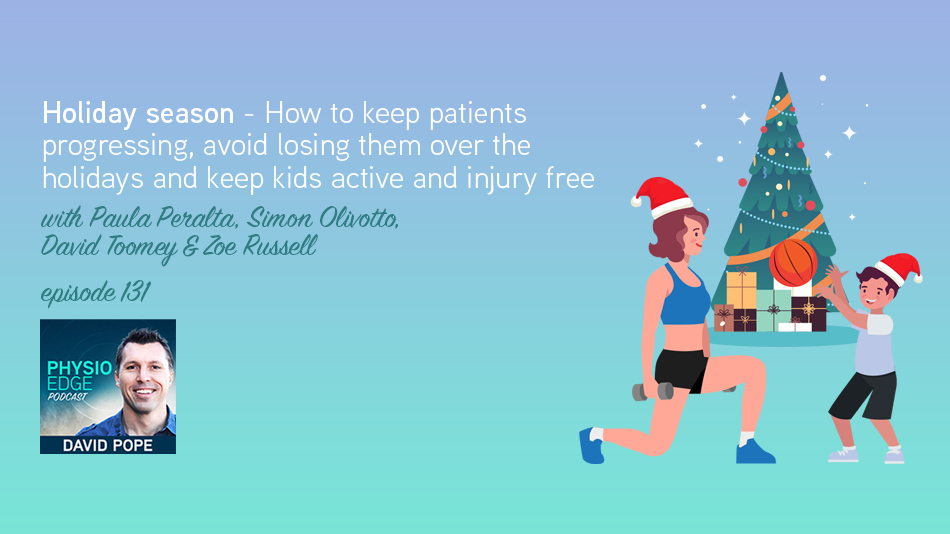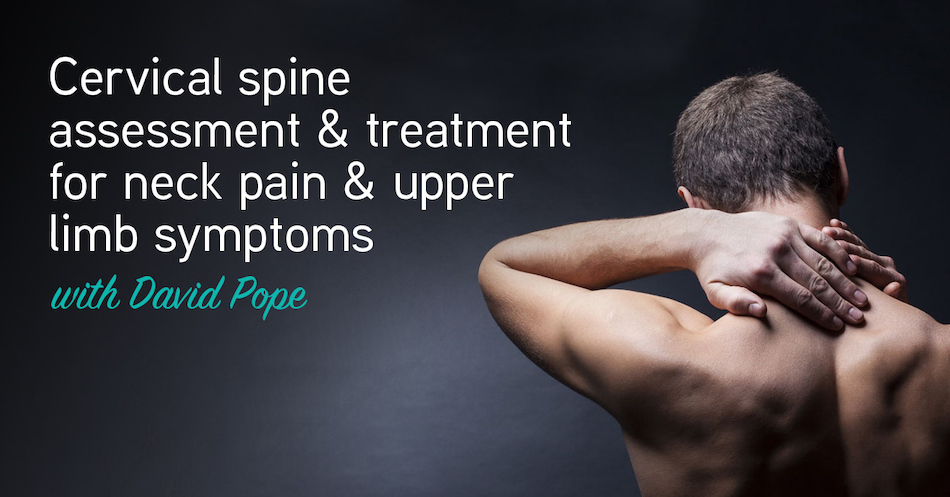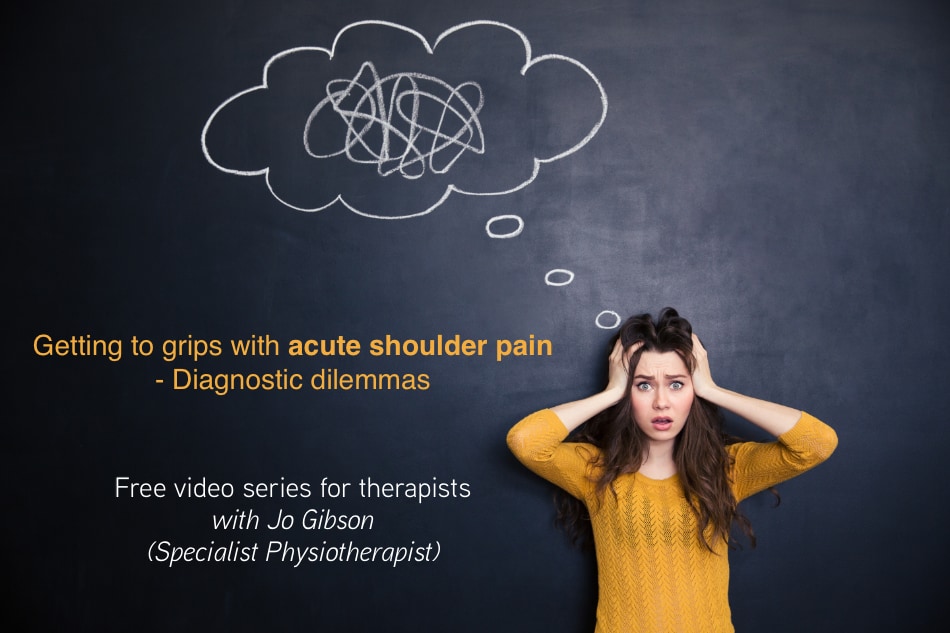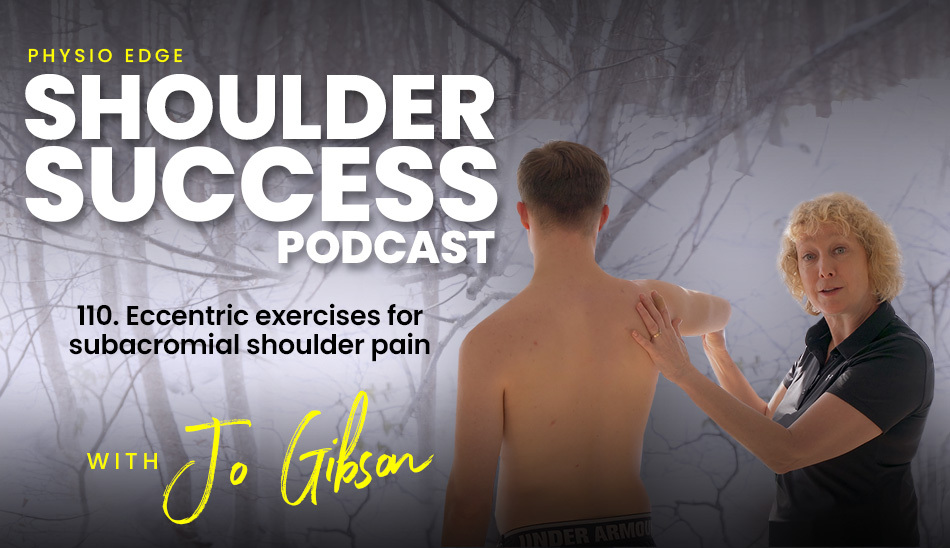Thu, 18 April 2024
ACL injuries result in significant time away from sport and distress for patients. The variety of management options, from surgical intervention to non-surgical management and rehabilitation protocols, often makes us uncertain when educating and helping patients choose the most appropriate care for their needs and goals. Recently, a pioneering non-operative ACL injury management pathway called the “Cross bracing protocol” has been pioneered and developed by Dr Tom Cross and Tom’s father (the late Orthopaedic surgeon) Dr Merv Cross. This protocol offers a promising alternative for patients with ACL injuries who are suitable for non-surgical intervention, where the ACL injury may heal or repair itself. Not all patients with an ACL injury are suitable for the Cross bracing protocol or non-surgical management, so how can you identify whether your patient is suitable, and which treatment options are best for each patient? In this insightful podcast episode, we discuss the complex challenge of ACL injury management and Cross bracing with Clare Walsh (Specialist Sports & Exercise Physiotherapist, FACP). Clare treats a lot of patients with ACL injuries with prehabilitation, post-op rehabilitation, or non-surgical management including Cross bracing. Clare works alongside Dr Tom Cross and other Sports Medicine Doctors, Orthopaedic surgeons (including the late Dr Merv Cross) and leading Sports Physiotherapists at Stadium Sports Physiotherapy and The Stadium Clinic. Clare teaches on the Cross bracing course conducted in Australia for Physiotherapists and health professionals, and is a Senior Educator & Presenter here at Clinical Edge. In this podcast we explore:
This podcast is packed full of great information on this emerging ACL injury treatment. You’ll finish this podcast with a deeper understanding of ACL injury management and Cross bracing plus practical knowledge, solutions and insights you can apply into your practice. Links
Chapters:
|
Sat, 6 April 2024
How can you treat patients who experience knee pain and swelling during and after running? If you suspect their symptoms are caused by a meniscal injury, how can you rehab and return these patients to running without surgery? In this Physio Edge: Running repairs podcast with Tom Goom, you’ll explore meniscal injuries in runners, recent research on runners with meniscal tears, and how to provide effective non-surgical management. You’ll discover:
Tom explores the physical aspects of recovery, along with the impact of general health, weight management, and gait retraining on knee health. With a realistic timeline for recovery and a focus on individualised treatment plans, this podcast is a must-listen for therapists who treat runners. 🔗 Free Webinar Alert! Don't miss out on our free webinars for therapists on shin pain and Achilles tendinopathy in runners. Check the link in the description for more information. Free running injury assessment & treatment video series available nowImprove running injury assessment & treatment now with the Running Repairs Online course with Tom Goom at clinicaledge.co/runningrepairs. Links associated with this episode:
Chapters:
|
Fri, 15 March 2024
Jo Gibson (Upper Limb Rehabilitation Specialist Physio) discusses the keys to successfully treat persistent anterior shoulder pain in two tennis players who had not recovered despite previous extensive rehab. In this podcast Jo explores what to include in your rehab of sportspeople who place large demands on their shoulders, elements commonly overlooked in shoulder rehab and how to address patients’ psychosocial factors, fears and beliefs to successfully treat persistent shoulder pain. Click here for the free webinar with Jo Gibson “Rotator cuff revealed! Rehab & reasoning”. The handout for this podcast consists of a transcript and research articles referenced in this podcast. Free video series “Frozen shoulder assessment & treatment” with Jo GibsonImprove your frozen shoulder assessment and treatment now with Jo Gibson’s free video series at clinicaledge.co/shoulder Shoulder: Steps to Success online course with Jo GibsonImprove your assessment and treatment of shoulder pain with the Shoulder: Steps to Success online course with Jo Gibson, now available for enrolment at clinicaledge.co/shouldersuccess Free trial Clinical Edge membershipUse a fresh approach to your musculoskeletal and sports injury treatment with a free trial Clinical Edge membership at clinicaledge.co/freetrial Links associated with this episode:
Articles associated with this episode:
Podcast chapters:
|
Fri, 9 February 2024
Join David Pope (APA Titled Musculoskeletal and Sports & Exercise Physio) and Zoe Russell (Specialist Sports Physiotherapist, FACP; APA Titled Musculoskeletal Physio) in the Physio Edge podcast as they explore how to assess, treat, and manage patients suffering from ACL injuries or suspected ACL injuries. You'll discover how to assess a patient with a suspected ACL injury, and criteria you can use to identify whether a patient may be suited to non-surgical management or is likely to require surgery. You'll also understand when immediate or delayed surgery is the best option, and how to guide patients through the decision-making process and different phases of rehab. Listen in to provide your ACL injury patients with the best treatment options. Free Achilles tendinopathy video series with Tom Goom available nowLinks
|
Thu, 24 August 2023
Rotator cuff tear arthropathy (RCTA) is a pattern of glenohumeral joint degenerative changes following rotator cuff tears, causing shoulder pain and stiffness. Subscapularis tears can also be involved in RCTA, or a significant cause of shoulder pain and disability. How can you identify RCTA and subscap tears in your shoulder pain patients? How can they be treated, and do these patients respond well to non-surgical management? Find out in this podcast with Jo Gibson (Upper Limb Rehabilitation Specialist Physio). Click here for the free webinar with Jo Gibson “Rotator cuff revealed! Rehab & reasoning”. The handout for this podcast consists of a transcript and research articles referenced in this podcast. Free video series “Frozen shoulder assessment & treatment” with Jo GibsonImprove your frozen shoulder assessment and treatment now with Jo Gibson’s free video series at clinicaledge.co/shoulder Shoulder: Steps to Success online course with Jo GibsonImprove your assessment and treatment of shoulder pain with the Shoulder: Steps to Success online course with Jo Gibson, now available for enrolment at clinicaledge.co/shouldersuccess Free trial Clinical Edge membershipUse a fresh approach to your musculoskeletal and sports injury treatment with a free trial Clinical Edge membership at clinicaledge.co/freetrial Links associated with this episode:
Articles associated with this episode:
Chapters:
|
Mon, 21 August 2023
How can you successfully treat hip pain and instability associated with your patients’ hip dysplasia? Find out the eight critical steps to excellent results with hip dysplasia in this podcast, which is part 3 in this three-part podcast series with Tom Goom (Running Physio). Improve running injury assessment & treatment now with the Running Repairs Online course with Tom Goom at clinicaledge.co/runningrepairs Free video series: Achilles Tendinopathy from start to finish line! with Tom GoomIn this free Masterclass "Achilles tendinopathy: Assessment & rehab from start to finish line" presented by Tom Goom and hosted by Clinical Edge, you’ll discover:
CLICK HERE to register for your free access to this three-part video series with Tom Goom CLICK HERE for your access to three free videos with Tom Goom Links associated with this episode:
Articles associated with this episode:
Chapters:
|
Thu, 17 August 2023
When a patient presents with a potential frozen shoulder, what other differential diagnoses must be considered? Find out in this podcast with Jo Gibson (Upper Limb Rehabilitation Specialist Physio), exploring the case study of a patient diagnosed with “frozen shoulder” with symptoms that don’t quite match a typical frozen shoulder. What’s the diagnosis of this patient’s stiff shoulder? You’ll also discover whether an X-ray or imaging is required when a patient presents with a stiff or frozen shoulder. Click here for the free webinar with Jo Gibson “Rotator cuff revealed! Rehab & reasoning”. The handout for this podcast is the transcript associated with this podcast. Free video series “Frozen shoulder assessment & treatment” with Jo GibsonImprove your frozen shoulder assessment and treatment now with Jo Gibson’s free video series at clinicaledge.co/shoulder Shoulder: Steps to Success online course with Jo GibsonImprove your assessment and treatment of shoulder pain with the Shoulder: Steps to Success online course with Jo Gibson, now available for enrolment at clinicaledge.co/shouldersuccess Free trial Clinical Edge membershipUse a fresh approach to your musculoskeletal and sports injury treatment with a free trial Clinical Edge membership at clinicaledge.co/freetrial Links associated with this episode:
Chapters:
|
Mon, 12 June 2023
Hip dysplasia is a commonly missed cause of hip and groin pain. In this podcast, which is part 2 in the 3 part series with Tom Goom (Running Physio), you’ll discover three types of hip dysplasia that will cause different symptoms and need different treatment (based on Wilkins et al. 2017), how to identify each type, and common exercises and a treatment approach that may be stirring up your patients hip and groin pain. Improve running injury assessment & treatment now with the Running Repairs Online course with Tom Goom at clinicaledge.co/runningrepairs Tricky tendons - Your free video guide to tendinopathy treatment with Tom Goom.Discover a new, effective approach to treatment of tricky tendinopathy presentations, and lesser known tendinopathies with this free video series presented by Tom Goom (Running Physio) and hosted by Clinical Edge. Tom will reveal the secrets to successfully treat tendon pain, and get your patients back to running and sport quickly and easily, without stirring up their pain. Get your free access to this video series now. CLICK HERE for your access to three free videos with Tom Goom CLICK HERE for your access to three free videos with Tom Goom Links associated with this episode:
Articles associated with this episode:
Chapters:
|
Fri, 2 June 2023
Stingers or burners are a burning or stinging pain, often with some paraesthesia and occasionally weakness, often occurring in impact sports such as rugby or American football. When your patients present with neck and arm symptoms, how can you differentiate a stinger or burner from a C/sp fracture, discogenic symptoms or nerve root compression, which all require very different treatment? How should you manage patients with one-off or repeated stingers or burners? Find out in this podcast with Jo Gibson (Upper Limb Rehabilitation Specialist Physio). The handout for this podcast consists of a transcript and articles referenced in the podcast. Free video series “Frozen shoulder assessment & treatment” with Jo GibsonImprove your frozen shoulder assessment and treatment now with Jo Gibson’s free video series at clinicaledge.co/shoulder Shoulder: Steps to Success online course with Jo GibsonImprove your assessment and treatment of shoulder pain with the Shoulder: Steps to Success online course with Jo Gibson, now available for enrolment at clinicaledge.co/shouldersuccess Free trial Clinical Edge membershipUse a fresh approach to your musculoskeletal and sports injury treatment with a free trial Clinical Edge membership at clinicaledge.co/freetrial Links associated with this episode:
Articles associated with this episode:
Chapters:
|
Fri, 19 May 2023
Hip dysplasia is a commonly missed cause of hip and groin pain, catching, clicking, locking or popping, resulting from lack of coverage of the femoral head by the acetabulum. How can you identify hip dysplasia in your hip or groin pain patients, and avoid misdiagnosing it as iliopsoas or adductor related groin pain? What signs and symptoms will your patients reveal in their subjective history that’ll help you identify this condition? Find out the key signs and symptoms of hip dysplasia in this podcast with Tom Goom (Running Physio). Improve running injury assessment & treatment now with the Running Repairs Online course with Tom Goom at clinicaledge.co/runningrepairs Tricky tendons - Your free video guide to tendinopathy treatment with Tom Goom.Discover a new, effective approach to treatment of tricky tendinopathy presentations, and lesser known tendinopathies with this free video series presented by Tom Goom (Running Physio) and hosted by Clinical Edge. Tom will reveal the secrets to successfully treat tendon pain, and get your patients back to running and sport quickly and easily, without stirring up their pain. Get your free access to this video series now. CLICK HERE for your access to three free videos with Tom Goom CLICK HERE for your access to three free videos with Tom Goom Links associated with this episode:
Articles associated with this episode:
Chapters:
|
Fri, 21 April 2023
Posterior shoulder instability can occur after a fall onto an outstretched arm, or diving and hitting the ground with your arm (like diving to score a try in rugby), injuring the posterior labrum and/or the glenohumeral joint. Unlike anterior shoulder instability, patients with posterior shoulder instability may not have have a feeling of instability, but may just experience pain, fatigue and weakness. How can you identify posterior shoulder instability in your shoulder pain patients? What does your rehab for posterior shoulder instability need to include? Find out in this podcast with Jo Gibson (Upper Limb Rehabilitation Specialist Physio). The handout for this podcast consists of a transcript and articles referenced in the podcast. Free video series “Frozen shoulder assessment & treatment” with Jo GibsonImprove your frozen shoulder assessment and treatment now with Jo Gibson’s free video series at clinicaledge.co/shoulder Shoulder: Steps to Success online course with Jo GibsonImprove your assessment and treatment of shoulder pain with the Shoulder: Steps to Success online course with Jo Gibson, now available for enrolment at clinicaledge.co/shouldersuccess Free trial Clinical Edge membershipUse a fresh approach to your musculoskeletal and sports injury treatment with a free trial Clinical Edge membership at clinicaledge.co/freetrial Links associated with this episode:
Articles associated with this episode:
Chapters:
|
Mon, 13 March 2023
After injury or surgery, a lot of runners are told to stop running for different reasons. How can you answer patients that ask if they need to give up running for good? When should patients consider permanently stopping running? Find out in this podcast with Tom Goom (Running Physio). Improve running injury assessment & treatment now with the Running Repairs Online course with Tom Goom at clinicaledge.co/runningrepairs Tricky tendons - Your free video guide to tendinopathy treatment with Tom Goom.Discover a new, effective approach to treatment of tricky tendinopathy presentations, and lesser known tendinopathies with this free video series presented by Tom Goom (Running Physio) and hosted by Clinical Edge. Tom will reveal the secrets to successfully treat tendon pain, and get your patients back to running and sport quickly and easily, without stirring up their pain. Get your free access to this video series now. CLICK HERE for your access to three free videos with Tom Goom Links associated with this episode:
Chapters: 03:25 - Stop running permanently 8:15 - Safe to continue running? 10:05 - Post ACL surgery 11:22 - Knee OA 13:27 - Running rehab plan 16:44 - Key takeaways |
Fri, 3 March 2023
Will strength training help your patients reduce their risk of running injury and improve their running performance? Find out what the latest research reveals in this Physio Edge Track record: Running repairs podcast with Tom Goom (Running Physio), as you discover:
Improve running injury assessment & treatment now with the Running Repairs Online course with Tom Goom at clinicaledge.co/runningrepairs Tricky tendons - Your free video guide to tendinopathy treatment with Tom Goom.Discover a new, effective approach to treatment of tricky tendinopathy presentations, and lesser known tendinopathies with this free video series presented by Tom Goom (Running Physio) and hosted by Clinical Edge. Tom will reveal the secrets to successfully treat tendon pain, and get your patients back to running and sport quickly and easily, without stirring up their pain. Get your free access to this video series now. CLICK HERE for your access to three free videos with Tom Goom Links associated with this episode:
Article associated with this episode:Chapters: 02:22 - Research study 04:39 - Results 07:47 - Training program |
Fri, 24 February 2023
Marathon runners often come to us with pain, but also they need to build up their mileage in preparation for one of the most challenging events in endurance sport. They're trying to do more when their body may be telling them they need to be doing less. How do we manage their symptoms, and guide them up to the marathon itself? Find out in this podcast with Tom Goom (Running Physio). Improve running injury assessment & treatment now with the Running Repairs Online course with Tom Goom at clinicaledge.co/runningrepairs Tricky tendons - Your free video guide to tendinopathy treatment with Tom Goom.Discover a new, effective approach to treatment of tricky tendinopathy presentations, and lesser known tendinopathies with this free video series presented by Tom Goom (Running Physio) and hosted by Clinical Edge. Tom will reveal the secrets to successfully treat tendon pain, and get your patients back to running and sport quickly and easily, without stirring up their pain. Get your free access to this video series now. CLICK HERE for your access to three free videos with Tom Goom
Links associated with this episode:
Chapters: 00:02:40 - Marathon training phases 00:09:08 - Training priority 00:11:41 - Manageable goals 00:12:27 - Discussing risks 00:13:59 - Short and simple rehab 00:15:23 - Hands-on treatment 00:17:17 - Case study
Direct download: 150._Top_tips_for_treating_marathon_runners_with_Tom_Goom.mp3
Category:general -- posted at: 12:29pm AEST |
Fri, 3 February 2023
How can you settle symptoms and make progress with patients, when pain is a significant barrier to performing the rehab that will help them get back to the things they want to do? Discover the five step process in this podcast with Tom Goom (Running Physio) to settle patients symptoms, overcome this barrier of pain, and help patients make progress with their rehab.
Improve running injury assessment & treatment now with the Running Repairs Online course with Tom Goom at clinicaledge.co/runningrepairs Tricky tendons - Your free video guide to tendinopathy treatment with Tom Goom.Discover a new, effective approach to treatment of tricky tendinopathy presentations, and lesser known tendinopathies with this free video series presented by Tom Goom (Running Physio) and hosted by Clinical Edge. Tom will reveal the secrets to successfully treat tendon pain, and get your patients back to running and sport quickly and easily, without stirring up their pain. Get your free access to this video series now. CLICK HERE for your access to three free videos with Tom Goom CLICK HERE for your access to three free videos with Tom Goom Links associated with this episode:
Direct download: 149._How_to_settle_symptoms_and_make_progress_when_pain_is_a_barrier_with_Tom_Goom.mp3
Category:general -- posted at: 4:29pm AEST |
Fri, 18 November 2022
Zoe Russell discusses ankle sprain assessment and treatment, and how to return your patients to sport. You’ll discover how to help your ankle sprain patients fully recover as quickly as possible, and avoid long term issues, such as chronic ankle instability, osteoarthritis or other lower limb injuries. Zoe is a Specialist Sports Physiotherapist (FACP), APA Titled Musculoskeletal and Sports Physio, as well as a Clinical Edge Senior Educator and Presenter, and in this Physio Edge podcast hosted by David Pope, we discuss the latest evidence and practical strategies for ankle sprains, including:
Assessment
Diagnosis
Treatment
Links
References
Chapters:
|
Wed, 12 October 2022
Patients with knee osteoarthritis (OA) often have a sensitive and painful knee, and are reluctant to use or exercise it, feeling that it’ll just further “wear out” the joint. In this podcast with Dr JP Caneiro (Specialist Sports Physiotherapist, PhD) you’ll discover how to assess and rehabilitate knee OA patients, including:
Enjoy this podcast with Dr JP Caneiro, hosted by David Pope and Clinical Edge now to improve your treatment of knee OA. Links
Related podcasts
Chapters:
|
Fri, 15 July 2022
Patients with knee osteoarthritis (OA) often believe their knee is “bone on bone”, exercises will wear out their knee more and they just need a knee replacement. This narrative can make it difficult to motivate your patients to perform knee rehab exercises that have the potential to improve their pain, function and quality of life. How can you shift the narrative, educate your patients with knee OA so they “buy in” and perform an effective knee rehab program, and get better results with your treatment? In this podcast with Dr JP Caneiro you’ll discover:
Enjoy this podcast with Dr JP Caneiro and hosted by David Pope and Clinical Edge now to improve your treatment of knee OA. Links
Related podcasts
|
Fri, 22 April 2022
Exercise is a vital component in our rehabilitation of patients with musculoskeletal pain and injuries. How can you, as a Physiotherapist, Physical therapist or health professional, choose exercises for your patients that improve their pain, strength, control, confidence and the ability to reach their goals, without stirring up their pain? Find out in this podcast with David Pope (APA Titled Sports & Musculoskeletal Physio) and David Toomey (NZ Titled Musculoskeletal Physio & PhD Candidate) from the Clinical Edge education & presentation team. Links associated with this episode:
Direct download: 145_How_to_choose_exercises_that_improve_patients_pain_with_David_Toomey.mp3
Category:general -- posted at: 10:21am AEST |
Tue, 12 April 2022
Do we need to target “proprioception” in shoulder rehab with flexible or vibratory, blade-like rehab tools or water-filled pipes? Does the evidence support the use of these proprioceptive tools to improve patients shoulder pain, or are there different exercises that provide better results? Find out in this podcast with Jo Gibson (Upper Limb Rehabilitation Specialist Physio) and discover whether to include proprioceptive treatment tools in your patients shoulder rehabilitation programs. The handout for this podcast consists of articles referenced in the podcast. There is no additional transcript or handout available. Free video series “Frozen shoulder assessment & treatment” with Jo GibsonImprove your frozen shoulder assessment and treatment now with Jo Gibson’s free video series at clinicaledge.co/shoulder Shoulder: Steps to Success online course with Jo GibsonImprove your assessment and treatment of shoulder pain with the Shoulder: Steps to Success online course with Jo Gibson, now available for enrolment at clinicaledge.co/shouldersuccess Free trial Clinical Edge membershipUse a fresh approach to your musculoskeletal and sports injury treatment with a free trial Clinical Edge membership at clinicaledge.co/freetrial Links associated with this episode:
Articles associated with this episode:
Direct download: 144_Proprioceptive_rehab_tools_for_shoulder_pain_with_Jo_Gibson.mp3
Category:general -- posted at: 10:52am AEST |
Mon, 11 April 2022
What strategies can you recommend to your patients that are recovering from injury or increasing their training to help improve physical recovery? Athletes often use various recovery strategies such as ice baths, compression stockings, massage and more to improve their recovery, but are they actually effective? What key strategies are evidence-based and useful? Patients experiencing pain or a flareup may feel distressed or anxious. What mental recovery strategies can your patients use to help with these feelings of distress or anxiety? Find out in this podcast with Tom Goom (Running Physio), as you discover the key recovery strategies for physical and mental health. Improve running injury assessment & treatment now with the Running Repairs Online course with Tom Goom at clinicaledge.co/runningrepairs Tricky tendons - Your free video guide to tendinopathy treatment with Tom Goom.Discover a new, effective approach to treatment of tricky tendinopathy presentations, and lesser known tendinopathies with this free video series presented by Tom Goom (Running Physio) and hosted by Clinical Edge. Tom will reveal the secrets to successfully treat tendon pain, and get your patients back to running and sport quickly and easily, without stirring up their pain. Get your free access to this video series now. CLICK HERE for your access to three free videos with Tom Goom CLICK HERE for your access to three free videos with Tom Goom Links associated with this episode:
Direct download: 143_Key_recovery_strategies_for_physical_and_mental_health_with_Tom_Goom.mp3
Category:general -- posted at: 10:46am AEST |
Fri, 8 April 2022
Traumatic superior labrum anterior to posterior (SLAP) tears can occur in contact athletes and other patients that land on their arm or shoulder, and in throwers and other athletes. Initial assessment and even MRI often miss or misdiagnose these injuries, leading to ongoing shoulder, long head of biceps tendon (LHBT) or ACJ pain. In this podcast with Jo Gibson (Upper Limb Rehabilitation Specialist Physio) you’ll discover how to identify patients with SLAP tears. You’ll explore which assessment tests can be used to diagnose and differentiate SLAP tears from other causes of shoulder pain, and which imaging modalities will actually identify SLAP tears. The handout for this podcast is an article referenced in the podcast. There is no additional transcript or handout available. Free video series “Frozen shoulder assessment & treatment” with Jo GibsonImprove your frozen shoulder assessment and treatment now with Jo Gibson’s free video series at clinicaledge.co/shoulder Shoulder: Steps to Success online course with Jo GibsonImprove your assessment and treatment of shoulder pain with the Shoulder: Steps to Success online course with Jo Gibson, now available for enrolment at clinicaledge.co/shouldersuccess Free trial Clinical Edge membershipUse a fresh approach to your musculoskeletal and sports injury treatment with a free trial Clinical Edge membership at clinicaledge.co/freetrial Links associated with this episode:
Article associated with this episode:
Direct download: 142_Shoulder_SLAP_tear_assessment_diagnosis_and_treatment_with_Jo_Gibson.mp3
Category:general -- posted at: 1:40pm AEST |
Fri, 25 March 2022
Patients with anterior knee pain may have pain with activities that load the patellofemoral joint (PFJ), such as squatting, going up or down stairs, and running. When is it important to offload patients PFJ during your rehab, to help settle their symptoms? How can you design a rehab program to improve your patients' knee pain? Find out in this podcast with Tom Goom (Running Physio) as you discover how to effectively offload and treat patellofemoral joint pain, exercises to include in rehab, and activities and exercises to reduce during your initial phases of treatment. Improve running injury assessment & treatment now with the Running Repairs Online course with Tom Goom at clinicaledge.co/runningrepairs Tricky tendons - Your free video guide to tendinopathy treatment with Tom Goom.Discover a new, effective approach to treatment of tricky tendinopathy presentations, and lesser known tendinopathies with this free video series presented by Tom Goom (Running Physio) and hosted by Clinical Edge. Tom will reveal the secrets to successfully treat tendon pain, and get your patients back to running and sport quickly and easily, without stirring up their pain. Get your free access to this video series now. CLICK HERE for your access to three free videos with Tom Goom CLICK HERE for your access to three free videos with Tom Goom Links associated with this episode:
Article associated with this episode:
Direct download: 141_How_to_reduce_patellofemoral_pain_and_load_with_Tom_Goom.mp3
Category:general -- posted at: 2:39pm AEST |
Thu, 24 March 2022
When things don’t go well in a treatment session, what will help you identify the potential reasons and clues? Find out in this podcast with Jo Gibson (Upper Limb Rehabilitation Specialist Physio), and discover how to use non-verbal communication to improve the success of your treatment sessions. The handout for this podcast is an article referenced in the podcast. There is no additional transcript or handout available. Free video series “Frozen shoulder assessment & treatment” with Jo GibsonImprove your frozen shoulder assessment and treatment now with Jo Gibson’s free video series at clinicaledge.co/shoulder Shoulder: Steps to Success online course with Jo GibsonImprove your assessment and treatment of shoulder pain with the Shoulder: Steps to Success online course with Jo Gibson, now available for enrolment at clinicaledge.co/shouldersuccess Free trial Clinical Edge membershipUse a fresh approach to your musculoskeletal and sports injury treatment with a free trial Clinical Edge membership at clinicaledge.co/freetrial Links associated with this episode:
Articles associated with this episode:
Direct download: 140_How_to_use_non-verbal_communication_for_successful_treatment_sessions_with_Jo_Gibson.mp3
Category:general -- posted at: 2:43pm AEST |
Fri, 11 March 2022
Can shockwave improve pain and function in Achilles tendinopathy patients that fail to improve with rehab? Find out in this podcast as Tom Goom (Running Physio) reveals whether the latest research supports the use of shockwave in Achilles tendinopathy patients, and how to successfully return patients to running and rehab. Improve running injury assessment & treatment now with the Running Repairs Online course with Tom Goom at clinicaledge.co/runningrepairs Tricky tendons - Your free video guide to tendinopathy treatment with Tom Goom.Discover a new, effective approach to treatment of tricky tendinopathy presentations, and lesser known tendinopathies with this free video series presented by Tom Goom (Running Physio) and hosted by Clinical Edge. Tom will reveal the secrets to successfully treat tendon pain, and get your patients back to running and sport quickly and easily, without stirring up their pain. Get your free access to this video series now. CLICK HERE for your access to three free videos with Tom Goom CLICK HERE for your access to three free videos with Tom Goom The handout for this podcast is an article referenced in the podcast. There is no additional transcript or handout available. Links associated with this episode:
Article associated with this episode:
Direct download: 139_Shockwave_for_Achilles_tendinopathy_with_Tom_Goom.mp3
Category:general -- posted at: 12:39pm AEST |
Thu, 3 March 2022
How can you treat patients with an achilles or patellar tendinopathy while they’re in the middle of a season or training for an event? Successful treatment often includes loading and strengthening the tendon, but how can you quickly identify the best exercises and load for each patient? Find out in this Physio Edge podcast as David Pope and Daniel Silvan (Head Physiotherapist at Aspire Academy, Aspetar) discuss how to choose the most effective exercises for your patients to successfully treat lower limb tendinopathy. Links associated with this episode:
Direct download: 138._How_to_treat_patellar__Achilles_tendinopathy_with_Daniel_Silvan.mp3
Category:general -- posted at: 12:15pm AEST |
Thu, 24 February 2022
Do your acute ACJ injury patients require surgery, or can they be managed conservatively with a rehab program? Find out in this podcast as Jo Gibson (Upper Limb Rehabilitation Specialist Physio) reveals how to grade patients’ acute ACJ injuries, help patients decide on surgery or conservative management, and rehab your patients effectively. Free video series “Frozen shoulder assessment & treatment” with Jo GibsonImprove your frozen shoulder assessment and treatment now with Jo Gibson’s free video series at clinicaledge.co/shoulder Shoulder: Steps to Success online course with Jo GibsonImprove your assessment and treatment of shoulder pain with the Shoulder: Steps to Success online course with Jo Gibson, now available for enrolment at clinicaledge.co/shouldersuccess Free trial Clinical Edge membershipUse a fresh approach to your musculoskeletal and sports injury treatment with a free trial Clinical Edge membership at clinicaledge.co/freetrial Links associated with this episode:
Direct download: 137._Acute_AC_joint_injury_imaging_rehab__recovery_with_Jo_Gibson.mp3
Category:general -- posted at: 12:18pm AEST |
Thu, 17 February 2022
Shoulder pain & frozen shoulder can be extremely debilitating for patients, impacting their ability to sleep, fulfill their normal work and family role or have fun. How can you as a therapist understand your patients pain experience, help them feel supported and meet your patients needs throughout their journey to recovery from shoulder pain or frozen shoulder? Find out in this podcast with Jo Gibson (Upper Limb Rehabilitation Specialist Physio), hosted by Clinical Edge, as you explore how the latest research can help improve your shoulder pain treatment. The handout for this podcast is an article referenced in the podcast. There is no additional transcript or handout available. Free video series “Frozen shoulder assessment & treatment” with Jo GibsonImprove your frozen shoulder assessment and treatment now with Jo Gibson’s free video series at clinicaledge.co/shoulder Shoulder: Steps to Success online course with Jo GibsonImprove your assessment and treatment of shoulder pain with the Shoulder: Steps to Success online course with Jo Gibson, now available for enrolment at clinicaledge.co/shouldersuccess Free trial Clinical Edge membershipUse a fresh approach to your musculoskeletal and sports injury treatment with a free trial Clinical Edge membership at clinicaledge.co/freetrial Links associated with this episode:
Articles associated with this episode:
Direct download: 136._Frozen_shoulder_patients_journey_to_recovery._Physio_Edge_Shoulder_Success_podcast_with_Jo_Gibson.mp3
Category:general -- posted at: 12:49pm AEST |
Tue, 15 February 2022
Calf strains are common in runners, footballers, dancers and other athletes. Discover how to assess, differentially diagnose and tailor your treatment of calf strains using the latest evidence in this podcast with Tom Goom (Running Physio). Improve running injury assessment & treatment now with the Running Repairs Online course with Tom Goom at clinicaledge.co/runningrepairs Your comprehensive guide to ITB assessment & treatment with Tom GoomIf you treat runners, walkers, cyclists or rowers you'll regularly see patients with lateral knee pain from an irritated iliotibial band (ITB). What causes ITB syndrome? How can you assess, diagnose and successfully treat it?
CLICK HERE to get immediate access to this free ITB video series with Tom Goom. Lateral hip pain assessment, diagnosis & treatment video seriesTo improve your lateral hip pain assessment, diagnosis & treatment skills, CLICK HERE for your access to 3 free videos presented by Tom Goom Improve running injury assessment & treatment now with the Running Repairs Online course with Tom Goom at clinicaledge.co/runningrepairs The handout for this podcast is an article referenced in the podcast. There is no additional transcript or handout available. Links associated with this episode:
Article associated with this episode:
Direct download: 135._Rehab_calf_strain_patients_effectively._Physio_Edge_Track_record_-_Running_repairs_podcast_with_Tom_Goom.mp3
Category:general -- posted at: 1:25pm AEST |
Fri, 11 February 2022
When you’re treating patients that feel like their scapulae are asymmetrical, a rib is “out of place”, or they feel neck or thoracic stiffness without any restriction in movement, they may expect you to perform treatment that is unlikely to help, like joint mobilisation, manipulation or massage. How can you use the latest pain science in your treatment to help patients overcome the experience of asymmetry, stiffness or something being out of place? Find out in this podcast with Jo Gibson (Upper Limb Rehabilitation Specialist Physio). The handout for this podcast is an article referenced in the podcast. There is no additional transcript or handout available. Free video series “Frozen shoulder assessment & treatment” with Jo GibsonImprove your frozen shoulder assessment and treatment now with Jo Gibson’s free video series at clinicaledge.co/shoulder Shoulder: Steps to Success online course with Jo GibsonImprove your assessment and treatment of shoulder pain with the Shoulder: Steps to Success online course with Jo Gibson, now available for enrolment at clinicaledge.co/shouldersuccess Free trial Clinical Edge membershipUse a fresh approach to your musculoskeletal and sports injury treatment with a free trial Clinical Edge membership at clinicaledge.co/freetrial Links associated with this episode:
Articles associated with this episode:
Direct download: 134._How_to_help_patients_that_feel_asymmetrical_stiff_or_somethings_out_of_place._Physio_Edge_Shoulder_Success_podcast_with_Jo_Gibson.mp3
Category:general -- posted at: 11:48am AEST |
Thu, 10 February 2022
Calcaneal bony stress injuries or fractures are often misdiagnosed and incorrectly treated as insertional Achilles tendinopathy or plantar heel pain, leading to worsening pain and poor recovery. In this podcast with Tom Goom (Running Physio), hosted by Clinical Edge, discover how to accurately assess and effectively treat patients with calcaneal bony stress injuries or fractures. Improve running injury assessment & treatment now with the Running Repairs Online course with Tom Goom at clinicaledge.co/runningrepairs Your comprehensive guide to ITB assessment & treatment with Tom GoomIf you treat runners, walkers, cyclists or rowers you'll regularly see patients with lateral knee pain from an irritated iliotibial band (ITB). What causes ITB syndrome? How can you assess, diagnose and successfully treat it?
CLICK HERE to get immediate access to this free ITB video series with Tom Goom. Lateral hip pain assessment, diagnosis & treatment video seriesTo improve your lateral hip pain assessment, diagnosis & treatment skills, CLICK HERE for your access to 3 free videos presented by Tom Goom Improve running injury assessment & treatment now with the Running Repairs Online course with Tom Goom at clinicaledge.co/runningrepairs The handout for this podcast is an article referenced in the podcast. There is no additional transcript or handout available. Links associated with this episode:
Article associated with this episode:
Direct download: 133._How_to_assess_and_treat_calcaneal_stress_fractures._Physio_Edge_Running_Repairs_podcast_with_Tom_Goom.mp3
Category:general -- posted at: 11:57am AEST |
Fri, 4 February 2022
Why do some rotator cuff (RC) repair patients progress really slowly post-operatively and experience high levels of pain and sleep disturbance for long periods? Find out in this case study and exploration of the latest evidence in this podcast with Jo Gibson (Shoulder Rehabilitation Specialist) as she reveals: Quick or slow recovery?
Objective assessment tests
Expectations, education & reassurance
Treatment & resources
The handout for this podcast is an article referenced in the podcast. There is no additional transcript or handout available. Free video series “Frozen shoulder assessment & treatment” with Jo GibsonImprove your frozen shoulder assessment and treatment now with Jo Gibson’s free video series at clinicaledge.co/shoulder Shoulder: Steps to Success online course with Jo GibsonImprove your assessment and treatment of shoulder pain with the Shoulder: Steps to Success online course with Jo Gibson, now available for enrolment at clinicaledge.co/shouldersuccess Use a fresh approach to your musculoskeletal and sports injury treatment with a free trial Clinical Edge membership at clinicaledge.co/freetrial Links associated with this episode:
Articles associated with this episode:
Direct download: 132._Rotator_cuff_repairs_-_How_to_treat_slowly_recovering_patients._Physio_Edge_Shoulder_Success_podcast_with_Jo_Gibson.mp3
Category:general -- posted at: 6:26pm AEST |
Fri, 3 December 2021
We’re heading into the holiday season, when your patients will either keep progressing with their rehab program, or give their exercises a miss for a while and risk an increase in symptoms, skip appointments in the new year, and disappear off your list. How can you prepare & motivate your patients for the holiday period, or effectively hand over care of your patients to another therapist, so their pain and strength keep improving? In this live mentoring session, the Clinical Edge presentation team of Specialist and Titled Physiotherapists will reveal to you:
Prepare your patients now, and set yourself up for a successful holiday season and new year with this free mentoring session.
Links associated with this episode:
Direct download: 131._Holiday_season_-_How_to_keep_patients_progressing_avoid_losing_them_over_the_holidays_and_keep_kids_active_and_injury_free_with_Paula_Peralta_Simon_Olivotto_David_Toomey__Zoe_Russell.mp3
Category:general -- posted at: 4:44pm AEST |
Thu, 26 August 2021
How can you thoroughly assess your neck pain patients, and use the information from your assessment to guide your treatment? What treatments are effective in helping patients overcome their neck pain? In the first podcast with Specialist Musculoskeletal Physiotherapist, researcher and Emeritus Prof. Gwen Jull 121. Neck pain assessment, clinical reasoning & rehab. Physio Edge podcast with Prof Gwendolen Jull, we discussed questions to ask during your subjective history that help guide your neck pain assessment and clinical reasoning. In this followup podcast, discover how to accurately assess and effectively treat neck pain with Emeritus Prof. Gwen Jull, including: Objective examination (OE)
Treatment
CLICK HERE to get access to Cervical radiculopathy assessment & treatment case study Links associated with this episode:
Direct download: 130._Neck_pain_objective_assessment__treatment_part_2_with_Prof._Gwendolen_Jull.mp3
Category:general -- posted at: 12:05pm AEST |
Wed, 18 August 2021
When patients have a running injury, such as knee pain or Achilles tendinopathy, do we need to include strength training in their rehab? Discover when strength training is an important part of comprehensive running injury rehab in this podcast with Tom Goom (Running Physio), and explore:
Improve running injury assessment & treatment now with the Running Repairs Online course with Tom Goom at clinicaledge.co/runningrepairs Your comprehensive guide to ITB assessment & treatment with Tom GoomIf you treat runners, walkers, cyclists or rowers you'll regularly see patients with lateral knee pain from an irritated iliotibial band (ITB). What causes ITB syndrome? How can you assess, diagnose and successfully treat it?
CLICK HERE to get immediate access to this free ITB video series with Tom Goom. Lateral hip pain assessment, diagnosis & treatment video seriesTo improve your lateral hip pain assessment, diagnosis & treatment skills, CLICK HERE for your access to 3 free videos presented by Tom Goom Improve running injury assessment & treatment now with the Running Repairs Online course with Tom Goom at clinicaledge.co/runningrepairs Links associated with this episode:
Direct download: 129._How_important_is_strength_in_running_injury_Physio_Edge_Track_record_-_Running_repairs_podcast_with_Tom_Goom.mp3
Category:general -- posted at: 12:02pm AEST |
Tue, 17 August 2021
Patients may develop stiffness following rotator cuff repair or other shoulder surgery, particularly with longer periods of immobilisation. On the other hand, some patients may fail rehab without sufficient immobilisation. How can you identify which patients are likely to develop stiffness and will benefit from early mobilisation? Find out in this podcast with Jo Gibson (Clinical Physiotherapy Specialist), and discover:
Free video series “Frozen shoulder assessment & treatment” with Jo GibsonShoulder: Steps to Success online course with Jo GibsonImprove your assessment and treatment of shoulder pain with the Shoulder: Steps to Success online course with Jo Gibson, now available for enrolment at clinicaledge.co/shouldersuccess Links associated with this episode:
Direct download: 128._Postoperative_shoulders_-_can_we_predict_who_gets_stiff_Physio_Edge_Shoulder_success_podcast_with_Jo_Gibson.mp3
Category:general -- posted at: 6:56pm AEST |
Fri, 6 August 2021
Can you solve this case of a badminton player with a five year history of posterior shoulder pain and shoulder fatigue with overhead movements? Find out in this podcast with Jo Gibson (Clinical Physiotherapy Specialist). Discover the diagnosis and why the patient hasn’t improved with rehabilitation, as Jo reveals the case study and:
Free video series “Frozen shoulder assessment & treatment” with Jo GibsonShoulder: Steps to Success online course with Jo GibsonImprove your assessment and treatment of shoulder pain with the Shoulder: Steps to Success online course with Jo Gibson, now available for enrolment at clinicaledge.co/shouldersuccess Links associated with this episode:
Direct download: 127._Posterior_shoulder_pain_differential_diagnosis__treatment._Physio_Edge_Shoulder_success_podcast_with_Jo_Gibson.mp3
Category:general -- posted at: 11:06am AEST |
Fri, 23 July 2021
When your patient with Achilles tendon pain isn’t progressing as well as you hoped, could Plantaris be implicated in their pain? Find out in this latest Physio Edge Track record: Running repairs podcast with Tom Goom, where you’ll discover:
Enjoy this new podcast with Tom Goom now to improve your treatment of Achilles tendon pain. Improve running injury assessment & treatment now with the Running Repairs Online course with Tom Goom at clinicaledge.co/runningrepairs Your comprehensive guide to ITB assessment & treatment with Tom GoomIf you treat runners, walkers, cyclists or rowers you'll regularly see patients with lateral knee pain from an irritated iliotibial band (ITB). What causes ITB syndrome? How can you assess, diagnose and successfully treat it?
CLICK HERE to get immediate access to this free ITB video series with Tom Goom. Lateral hip pain assessment, diagnosis & treatment video seriesTo improve your lateral hip pain assessment, diagnosis & treatment skills, CLICK HERE for your access to 3 free videos presented by Tom Goom Improve running injury assessment & treatment now with the Running Repairs Online course with Tom Goom at clinicaledge.co/runningrepairs Links associated with this episode:
Direct download: 126._3_signs_of_Plantaris_involvement_in_Achilles_Tendinopathy._Physio_Edge_Track_record_-_Running_repairs_podcast_with_Tom_Goom.mp3
Category:general -- posted at: 3:06pm AEST |
Thu, 22 July 2021
Immobilisation following a humeral fracture or shoulder surgery quickly results in muscle atrophy and decreased shoulder strength and proprioception. How can you limit strength deficits that develop while patients are in a sling? During this period of immobilisation, cross education (CE) can help retain shoulder strength. This improved shoulder strength and proprioception after the immobilisation period concludes may enable a faster return to work, high load activities or sport. What is CE, and how can you use it in your treatment? Find out in this podcast with Jo Gibson (Clinical Physiotherapy Specialist), and discover:
Get free access to the free video series “Frozen shoulder assessment & treatment” with Jo Gibson at clinicaledge.co/shoulder Improve your assessment and treatment of shoulder pain with the Shoulder: Steps to Success online course with Jo Gibson, now available for enrolment at clinicaledge.co/shouldersuccess Free video series “Frozen shoulder assessment & treatment” with Jo GibsonShoulder: Steps to Success online course with Jo GibsonImprove your assessment and treatment of shoulder pain with the Shoulder: Steps to Success online course with Jo Gibson, now available for enrolment at clinicaledge.co/shouldersuccess Links associated with this episode:
Direct download: 125._Cross_education_to_improve_shoulder_strength._Physio_Edge_Shoulder_success_podcast_with_Jo_Gibson.mp3
Category:general -- posted at: 11:18am AEST |
Fri, 16 July 2021
What do foam rolling and stretching do to the ITB? Are they effective in the treatment of ITB syndrome? Find out in this podcast with Tom Goom (Running Physio).
Your comprehensive guide to ITB assessment & treatment with Tom GoomIf you treat runners, walkers, cyclists or rowers you'll regularly see patients with lateral knee pain from an irritated iliotibial band (ITB). What causes ITB syndrome? How can you assess, diagnose and successfully treat it?
CLICK HERE to get immediate access to this free ITB video series with Tom Goom. Lateral hip pain assessment, diagnosis & treatment video seriesTo improve your lateral hip pain assessment, diagnosis & treatment skills, CLICK HERE for your access to 3 free videos presented by Tom Goom Links associated with this episode:
Direct download: 124._What_do_foam_rolling_and_stretching_do_to_the_ITB_Physio_Edge_Track_record_-_Running_repairs_podcast_with_Tom_Goom.mp3
Category:general -- posted at: 3:20pm AEST |
Wed, 14 July 2021
Is subscapularis the forgotten part of the rotator cuff? Do we ever need to target it individually? If we do what are the best options for exercises? Find out which patients with torn or painful shoulders benefit from targeted subscapularis rehab in this episode of the Physio Edge Shoulder success podcast with Jo Gibson. You’ll discover: Rotator cuff & subscapularis anatomy & function.
Subscapularis pain & injury
Objective assessment
Targeted subscapularis rehabilitation
Subscapularis rehab in other patients
Improve your rehab of painful and torn shoulders now with this podcast. Get free access to the free video series “Frozen shoulder assessment & treatment” with Jo Gibson at clinicaledge.co/frozenshoulder Improve your assessment and treatment of shoulder pain with the Shoulder: Steps to Success online course with Jo Gibson, now available for enrolment at clinicaledge.co/shouldersuccess Links associated with this episode:
Direct download: 123._Subscapularis_-_the_forgotten_part_of_the_rotator_cuff_Physio_Edge_Shoulder_success_podcast_with_Jo_Gibson.mp3
Category:general -- posted at: 12:39pm AEST |
Fri, 2 July 2021
Are vaccinations associated with shoulder pain? Shoulder injury related to vaccine administration (SIRVA) has received a lot of attention on social media as vaccination levels have increased. If your patient has shoulder pain after a vaccine, what does this mean for treatment? Also in this podcast, how can you identify non-musculoskeletal causes of shoulder pain related to NSAID use or viscera? Find out in this podcast with Jo Gibson (Clinical Physiotherapy Specialist). The handout for this podcast is an article referenced in the podcast. There is no additional transcript or handout available. Free video series “Frozen shoulder assessment & treatment” with Jo Gibson at clinicaledge.co/frozenshoulder Improve your shoulder assessment & treatment with the Shoulder: Steps to Success online course with Jo Gibson at clinicaledge.co/shoulder Links associated with this episode:
Articles associated with this episode:
Direct download: 122._Shoulder_pain_after_vaccine__NSAIDS_-_Physio_Edge_Shoulder_success_podcast_with_Jo_Gibson.mp3
Category:general -- posted at: 2:46pm AEST |
Mon, 26 April 2021
How can you accurately assess neck pain patients and choose the most effective treatment to help resolve their pain and prevent recurrence? Find out in part 1 of this two part podcast series with Emeritus Professor Gwendolen Jull, and explore:
Download this podcast now to improve your assessment and treatment of neck pain. The next podcast with Prof Gwen Jull, available soon, will build on the knowledge you gain from part 1, and provide you with additional neck pain treatment strategies. CLICK HERE to get access to Cervical radiculopathy assessment & treatment case study Links associated with this episode:
Direct download: 121._Neck_pain_assessment_clinical_reasoning__rehab._Physio_Edge_podcast_with_Prof_Gwendolen_Jull.mp3
Category:general -- posted at: 11:56am AEST |
Fri, 16 April 2021
Pec minor cops the blame for shoulder pain, scapular dyskinesia and all sorts of upper limb pain and “dysfunction”. Is pec minor shortness or “tightness” really responsible for shoulder pain? In this podcast with Jo Gibson (Clinical Physiotherapy Specialist), you’ll discover whether the latest evidence supports pec minor as a major cause of shoulder pain, or whether pec minor is an innocent victim. You’ll also explore:
The handout for this podcast is an article referenced in the podcast. There is no additional transcript or handout available. Links associated with this episode:
Article associated with this episode:
Direct download: 120._Pec_minor_-_a_major_cause_of_shoulder_pain_Physio_Edge_Shoulder_success_podcast_with_Jo_Gibson.mp3
Category:general -- posted at: 7:17pm AEST |
Wed, 14 April 2021
Stress fractures and bone stress injuries in running patients need to be identified early, to allow recovery before the injury worsens and requires extensive time away from running. When should you suspect a stress fracture or a bone stress injury (BSI) in your running patients? Find out in the podcast with Tom Goom (Running Physio), and explore:
Improve your identification and assessment of stress fractures and bone stress injuries now with this podcast.
Your comprehensive guide to ITB assessment & treatment with Tom GoomIf you treat runners, walkers, cyclists or rowers you'll regularly see patients with lateral knee pain from an irritated iliotibial band (ITB). What causes ITB syndrome? How can you assess, diagnose and successfully treat it?
CLICK HERE to get immediate access to this free ITB video series with Tom Goom.
Lateral hip pain assessment, diagnosis & treatment video series To improve your lateral hip pain assessment, diagnosis & treatment skills, CLICK HERE for your access to 3 free videos presented by Tom Goom Links associated with this episode:
Direct download: 119._Suspect_a_stress_fracture_Physio_Edge_Track_record-_Running_repairs_podcast_with_Tom_Goom.mp3
Category:general -- posted at: 2:06pm AEST |
Mon, 5 April 2021
Patients with atraumatic sternoclavicular joint (SCJ) instability may have pain during overhead activities, throwing or playing sport. How can you diagnose and successfully rehabilitate SCJ instability? Find out in this podcast with Jo Gibson (Clinical Physiotherapy Specialist), and explore: Assessment & diagnosis
Rehab & recovery
Jo also answered these questions from FB Live listeners:
The handout for this podcast consists of articles referenced in the podcast. There is no additional transcript or handout available. Links associated with this episode:
Articles associated with this episode:
Direct download: 118._Atraumatic_SCJ_instability_diagnosis__rehab._Physio_Edge_Shoulder_success_podcast_with_Jo_Gibson.mp3
Category:general -- posted at: 1:28pm AEST |
Mon, 29 March 2021
How can you rehab patients with an acromioclavicular joint (ACJ) injury, or end of range elevation shoulder pain, long term shoulder pain, clavicular osteolysis, or osteoarthritis? What exercises and manual therapy can you use in your rehab program? Find out in this podcast with Jo Gibson (Clinical Physiotherapy Specialist), and discover:
Answers to live listener questions: Links associated with this episode:
Direct download: 117._ACJ_rehab._Physio_Edge_Shoulder_success_podcast_with_Jo_Gibson.mp3
Category:general -- posted at: 12:00pm AEST |
Fri, 19 March 2021
How can you diagnose posterior shoulder, neck and supraclavicular pain in your weightlifting patients and throwing athletes? Could a bone stress injury be responsible for your patients pain? Explore how to assess, diagnose and rehab shoulder pain from bone stress injuries in weightlifters or throwing athletes in this podcast with Jo Gibson (Clinical Physiotherapy Specialist). Discover:
Accurately assess, diagnose & treat stiff shoulders, including frozen shoulder, with this free videos series from Jo Gibson (Clinical Physiotherapy Specialist) at clinicaledge.co/shoulder Improve acute shoulder pain diagnosis with 3 free videos from Jo Gibson clinicaledge.co/shoulder Improve clinical skills, confidence and reasoning for all other areas of the body with a free trial Clinical Edge membership clinicaledge.co/freetrial The handout for this podcast consists of an article referenced in the podcast. There is no additional transcript or handout available. Links associated with this episode:
Article associated with this episode:
Direct download: 116._Shoulder_pain__bone_stress_injuries_in_weightlifters__throwing_athletes._Physio_Edge_Shoulder_success_podcast_with_Jo_Gibson.mp3
Category:general -- posted at: 5:29pm AEST |
Fri, 19 March 2021
Time for some detective work - can you diagnose the cause of this man’s shoulder pain? Listen out for the clues in this interesting case study. When your shoulder pain patient has bilateral shoulder pain after starting a gym program, difficulty lifting their arms overhead due to weakness, significant bilateral scapular winging and muscle atrophy, what are your potential diagnoses? Find out in this case study with Jo Gibson (Clinical Physiotherapy Specialist), and discover:
Accurately assess, diagnose & treat stiff shoulders, including frozen shoulder, with this free videos series from Jo Gibson (Clinical Physiotherapy Specialist) at clinicaledge.co/shoulder The handout for this podcast consists of articles referenced in the podcast. There is no additional transcript or handout available. Links associated with this episode:
Articles associated with this episode:
Direct download: 115._Shoulder_pain__weakness_-_diagnosis_and_detective_work._Physio_Edge_Shoulder_success_podcast_with_Jo_Gibson.mp3
Category:general -- posted at: 3:02pm AEST |
Fri, 12 March 2021
When paediatric or skeletally immature patients have shoulder pain, what diagnoses should be kept in mind? What are the potential diagnoses following trauma, in overuse injuries or “little leaguers shoulder”? What assessment and imaging is required in these patients? Find out in this podcast with Jo Gibson (Clinical Physiotherapy Specialist), and explore:
Accurately assess, diagnose & treat stiff shoulders, including frozen shoulder, with this free videos series from Jo Gibson (Clinical Physiotherapy Specialist) at clinicaledge.co/shoulder The handout for this podcast consists of articles referenced in the podcast. There is no additional transcript or handout available. Links associated with this episode:
Articles associated with this episode:
Direct download: 114._Paediatric_shoulder_injuries._Physio_Edge_Shoulder_success_podcast_with_Jo_Gibson.mp3
Category:general -- posted at: 10:24pm AEST |
Fri, 12 March 2021
What are the best rehab options for patients with an irreparable rotator cuff tear? Can we predict which patients will do well and how long rehab will take? Find out in this podcast with Jo Gibson (Clinical Physiotherapy Specialist), discussing rehab options, a patient case study and the latest evidence for massive rotator cuff tear (MRCT) rehab. Discover:
Get free access to video series on assessment & diagnosis of acute shoulder pain and stiff shoulders at clinicaledge.co/shoulder For improved clinical skills, knowledge and treatment results with all other areas of the body, get a free trial Clinical Edge membership at clinicaledge.co/freetrial The handout for this podcast consists of articles referenced in the podcast. There is no additional transcript or handout available. Links associated with this episode:
Articles associated with this episode:
Direct download: 113._Massive_rotator_cuff_tear_rehab._Physio_Edge_Shoulder_success_podcast_with_Jo_Gibson.mp3
Category:general -- posted at: 2:33pm AEST |
Fri, 5 March 2021
When swimmers and overhead athletes have superior & anterior shoulder pain, what are your likely diagnoses? How can you successfully treat shoulder pain that improves with rest from sport, then comes back each time they return to training or sport? Find out in this podcast with Jo Gibson (Clinical Physiotherapy Specialist), where you’ll discover:
Accurately assess, diagnose & treat stiff shoulders, including frozen shoulder, with this free videos series from Jo Gibson (Clinical Physiotherapy Specialist) at clinicaledge.co/shoulder Links associated with this episode:
Direct download: 112._Shoulder_pain_in_swimmers__overhead_athletes._Physio_Edge_Shoulder_success_podcast_with_Jo_Gibson.mp3
Category:general -- posted at: 12:17pm AEST |
Wed, 3 March 2021
When your female patient has shoulder pain, how can you identify if the cause is musculoskeletal, or related to women’s health issues? Find out in this podcast with Jo Gibson (Clinical Physiotherapy Specialist). You’ll explore two separate case studies of female shoulder pain patients with different diagnoses, that’ll help you discover:
For free video series covering assessment & diagnosis of acute shoulder pain and stiff shoulders head over to clinicaledge.co/shoulder Links associated with this episode:
Direct download: 111._How_to_identify_shoulder_pain_from_pelvic_health_issues._Case_studies_with_Jo_Gibson.mp3
Category:general -- posted at: 3:08pm AEST |
Thu, 25 February 2021
Are eccentric exercises useful in subacromial shoulder pain rehab? When shoulder pain rehab has stalled, and patients aren’t improving, will eccentric exercises help? Are eccentric exercises the missing component in successful rehab programs for recalcitrant shoulder pain? Find out in this discussion with Jo Gibson (Clinical Physiotherapy Specialist). Also discover:
Get free access to the stiff shoulder & acute shoulder pain assessment & diagnosis video series with Jo Gibson at clinicaledge.co/shoulder Links associated with this episode:
Direct download: 110._Eccentric_exercises_for_subacromial_shoulder_pain_Physio_Edge_Shoulder_success_podcast_with_Jo_Gibson.mp3
Category:general -- posted at: 2:00pm AEST |
Tue, 23 February 2021
An unusual cause of shoulder pain - what's the diagnosis? Solve this patient case study with Jo Gibson (Clinical Physiotherapy Specialist) and discover musculoskeletal and non-musculoskeletal causes of shoulder pain that are important to keep in mind when features don't fit. Get free access to the free webinar series on how to assess & diagnose shoulder pain and stiff shoulders with Jo Gibson at clinicaledge.co/shoulder Links associated with this episode:
Direct download: 109._An_unusual_cause_of_shoulder_pain_-_whats_the_diagnosis_Physio_Edge_Shoulder_success_podcast_with_Jo_Gibson.mp3
Category:general -- posted at: 12:33pm AEST |
Mon, 7 December 2020
When is shoulder pain from the C/sp? When a patient presents with shoulder pain and stiffness, how can C/Sp referral be identified? If a patient has full neck range of movement, and neck movements don’t reproduce shoulder pain, can their pain still be from the C/sp? Recent research shows that including treatment of the C/sp can improve results in up to ⅓ of shoulder pain patients. In this video with Jo Gibson (Clinical Physiotherapy Specialist) discover how to identify, assess and treat patients with cervical referral, including:
Get your access to free videos with Jo Gibson on acute shoulder pain & stiff shoulder assessment & diagnosis at clinicaledge.co/shoulder. Links associated with this episode:
Articles associated with this episode:
Direct download: 108._Cervical_spine_referred_shoulder_pain_assessment_diagnosis__treatment_with_Jo_Gibson.mp3
Category:general -- posted at: 2:14pm AEST |
Fri, 23 October 2020
When your patient has neck and arm pain, or low back and leg pain from neural tissue pain disorders (NTPD) such as peripheral nerve sensitisation (PNS), how will you treat them? Pain associated with PNS can occasionally be mild and non-irritable, but more often than not, it’s severe, highly irritable, and easy to stir up. How can you provide treatment that settles their pain, without stirring them up? What advice, education, manual therapy and exercise will you provide to help improve symptoms and speed up recovery? What are the keys to success with PNS patients? In Physio Edge podcast 104, Dr Toby Hall and I discussed PNS, common symptoms, causes, questions to ask, and how to assess and diagnose PNS in your patients. In this followup podcast, the second in our two-part series, Dr Toby Hall and I take you through the next phase - how to treat PNS. You’ll discover:
Links associated with this episode:
Direct download: 107._Treatment_of_peripheral_nerve_sensitisation_with_Dr_Toby_Hall.mp3
Category:general -- posted at: 2:05pm AEST |
Thu, 17 September 2020
Explore cervical radiculopathy, central sensitisation, achilles tendinopathy, hip & groin pain, & strength tests for athletes with Simon Olivotto, Dave Toomey, Paula Peralta & Nick Kendrick.
Sensitivity to cold or ice
Calf & achilles strengthening
Hip joint pain and the acetabular labrum
Strength assessment & screening of athletes
How can you make sense of pain? How can you describe pain to your patients in a way that makes sense, and doesn’t tell them “it’s all in your head”? Find out how to improve your confidence with acute and persistent pain in the upcoming “Making sense of pain” module. Warning: Contains swearing
Links associated with this episode:
Articles associated with this episode:
Direct download: Cervical_radiculopathy_central_sensitisation_achilles_tendinopathy_hip__groin_pain_and_strength_testing_with_Paula_Peralta_Simon_Olivotto_Nick_Kendrick__David_Toomey.mp3
Category:general -- posted at: 8:29pm AEST |
Mon, 29 June 2020
When you assess your patients shoulder movements, and notice a winging scapula, altered resting position or timing of scapula movement, do you need to treat it? Can we diagnose “Scapular dyskinesis”, and does it matter? How can you simplify your scapular assessment? In this podcast, Jo Gibson (Clinical Physiotherapy Specialist) explores common beliefs and myths around the scapula, including:
Alongside this mythbusting, you’ll explore:
Links associated with this episode:
Articles associated with this episode:
Direct download: 105._Scapular_dyskinesis_-_Does_it_really_matter_with_Jo_Gibson.mp3
Category:general -- posted at: 4:25pm AEST |
Thu, 18 June 2020
When your patient has leg, shoulder or arm pain, how can you identify if their pain is due to neural tissue compression, sensitisation or irritation? How can you differentiate whether pain is from neural tissue or local structures like nearby joints, tendons or muscles? What questions and objective tests will help you diagnose a neural tissue pain disorder (NTPD)? In this podcast with Dr Toby Hall (Specialist Musculoskeletal Physiotherapist, FACP, PhD), you’ll discover:
This podcast is the first part in a two part series on neural tissue pain disorders with Dr Toby Hall. Part 1 (this podcast) guides you through the types of NTPD, and how to assess and diagnose NTPD. Part 2 (available soon) will take you through how to treat PNS. I highly recommend listening to this episode (part 1) prior to part 2, to have a thorough understanding of when and how to treat PNS. Links associated with this episode:
Direct download: 104._Peripheral_nerve_sensitisation__neural_tissue_pain_disorders_with_Dr_Toby_Hall.mp3
Category:general -- posted at: 10:28am AEST |
Thu, 11 June 2020
A young male patient woke with an acute onset of constant, shooting shoulder pain, is painful into abduction, reluctant to lift his arm, and feels like he’s losing shoulder strength. He has no recent history of injury. Can you diagnose this unusual cause of shoulder pain, based on this patient's symptoms and physical tests? What are your differential diagnoses and red flags to keep in mind with this patient? In this podcast, Jo Gibson puts your knowledge of shoulder pain and diagnostic skills to the test, and explores how you can treat patients with this diagnosis. Links associated with this episode:
Articles associated with this episode:
Get access to free videos with Jo Gibson on diagnosis of shoulder pain at clinicaledge.co/shoulder
Direct download: 103._An_unusual_cause_of_shoulder_pain_with_Jo_Gibson.mp3
Category:general -- posted at: 1:24pm AEST |
Mon, 18 May 2020
Do you include stretches in your treatment of shoulder pain? Have you ever identified a glenohumeral internal rotation deficit (GIRD) and used the "Sleeper stretch" to help improve internal rotation? Do stretches have any value for shoulder pain, or are there better treatment options? In this podcast, Jo Gibson (Clinical Physiotherapy Specialist) discusses how to differentiate true capsular stiffness from muscle stiffness, what information GIRD provides, and whether sleeper stretches for shoulder pain are a useful treatment. Jo explores the current research and clinical implications on your treatment, including:
Links associated with this episode:
Articles associated with this episode:
Direct download: 102._Stretching_for_shoulder_pain_-_Is_it_time_to_put_sleeper_stretches_to_bed_with_Jo_Gibson.mp3
Category:general -- posted at: 11:01am AEST |
Tue, 5 May 2020
Shoulder surgery in athletes is common following dislocation. Accelerated post-op shoulder stabilisation rehab protocols include early mobilisation to reduce movement, proprioceptive and strength deficits. This has allowed earlier return to play (RTP), however athletes often still have significant proprioceptive and strength deficits up to 2 years post surgery. Despite getting back to play, athletes may struggle to get back to performance. Following surgery, contact athletes such as rugby players, throwing athletes and young players have additional RTP challenges. Redislocation risks in contact sports such as rugby are high, leading to poor outcomes. Younger athletes are not skeletally mature, and with early RTP following stabilisation surgery may have higher failure rates. How can you identify and address these challenges? Which tests and features in a patients history help you determine whether a patient is suitable for an early RTP? In this podcast with Jo Gibson (Clinical Physiotherapy Specialist), you’ll explore:
Links associated with this episode: Download and subscribe to the podcast on iTunes Articles associated with this episode:CLICK HERE to download the articles associated with this podcast
Direct download: 101._Return_to_play_testing_after_shoulder_surgery_with_Jo_Gibson.mp3
Category:general -- posted at: 10:48am AEST |
Fri, 3 April 2020
100 Physio Edge podcast episodes since I discovered a love of podcasts, and created the Physio Edge podcast to help Physio’s, Physical Therapists and other health professionals in their clinical practice with practical information from the leaders in different musculoskeletal and sports injuries. I really enjoy recording each podcast, helping you with your clinical challenges and hearing how the podcast has helped you with your patients. While recording each of these podcasts, I’ve noticed that one area Physiotherapy experts & leaders have in common is their well developed clinical reasoning. They use effective & efficient clinical problem solving to assess and treat their patients. How can you improve your clinical reasoning to more effectively assess and treat your patients? In this podcast with the new Clinical Edge Senior Physio education & presentation team - David Toomey (NZ based Musculoskeletal Physio), Jordan Craig (APA Titled Musculoskeletal & Sports Physio) and Simon Olivotto (Specialist Musculoskeletal Physiotherapist, FACP), you’ll explore:
Download this podcast now to improve your clinical reasoning and treatment results with these five practical strategies. Links associated with this episode: Download and subscribe to the podcast on iTunes Articles associated with this episode:
Direct download: Physio_Edge_100_5_practical_strategies_to_improve_your_clinical_reasoning__treatment_results_with_David_Toomey_Jordan_Craig__Simon_Olivotto.mp3
Category:general -- posted at: 5:27pm AEST |
Fri, 13 March 2020
Patients with shoulder pain, rotator cuff tears and nerve injuries can often be seen shrugging their shoulder while they lift their arm, appearing to overuse their upper fibres of trapezius. Surface EMG research has shown increased activity in UFT in shoulder pain and whiplash patients. To add to this, patients get sore upper traps, and can be adamant that they need regular massage of their upper fibres of trapezius (UFT). We seem to have plenty of evidence that we need to decrease UFT muscle activity, and help this by providing exercises to target the middle and lower traps. Is this really the case? Are the upper traps really a bad guy, or a victim caught in the spotlight? Do we need to decrease upper traps muscle activity to help our patients shoulder or neck pain? Or perhaps counter-intuitively, do we need to strengthen upper traps and help them to work together with the surrounding muscles? In this podcast, Jo Gibson (Clinical Specialist Physio) explores the evidence around the upper fibres of trapezius, and implications on your clinical practice. You’ll discover:
Download this episode now to improve your treatment of shoulder and neck pain. Links associated with this episode: Download and subscribe to the podcast on iTunes Articles associated with this episode: CLICK HERE to download the articles associated with this podcast
Direct download: Physio_Edge_099_Upper_traps_-_are_they_really_a_bad_guy_with_Jo_Gibson.mp3
Category:general -- posted at: 2:19pm AEST |
Fri, 14 February 2020
Strength training can be used in your treatment and rehab programs to improve your patients strength, load capacity, function & pain, so they can get back into work and the activities they enjoy. In your athletic patients, strength training can be used to help restore power and speed, which are vital for sporting performance. Would you like to include more strength training in your treatment, but aren’t completely sure about the most effective ways to build strength? Which exercises can you use? How many sets and reps should your patients perform? Will 3 sets of 10 reps build strength effectively? What is power training, when should you focus on improving power, and how can you incorporate power training? In this podcast with David Joyce - Sports Physiotherapist, S&C expert and co-author of High performance training for sports, and Sports injury prevention and rehabilitation, you will discover:
CLICK HERE to download your podcast handoutLinks associated with this episode: Download and subscribe to the podcast on iTunes
Direct download: Physio_Edge_098_How_to_use_strength_training_in_your_treatment_with_David_Joyce.mp3
Category:general -- posted at: 1:12pm AEST |
Wed, 29 January 2020
Long head of biceps (LHB) tendinopathy and associated anterior shoulder pain can develop in patients that increase their lifting load eg moving house, overhead activities, activities that involve loaded shoulder extension and in throwing athletes. Patients may also develop long head of biceps tendon pain after a traumatic ACJ injury or SLAP tear. How can you identify and treat LHB tendinopathy? In this podcast with Jo Gibson, you’ll explore: What causes LHB tendinopathy?
LHB Anatomy & function
Patient features that help your diagnosis
Subjective history features that help your diagnosis
Objective testing & diagnosis
Rotator cuff tears & involvement in LHB
Imaging
How to treat LHB
Additional questions covered
Links associated with this episode: Download and subscribe to the podcast on iTunes
Direct download: Physio_Edge_097_Anterior_shoulder_pain_long_head_of_biceps_and_SLAP_tears_with_Jo_Gibson.mp3
Category:general -- posted at: 6:29pm AEST |
Mon, 16 December 2019
Patients with thoracic outlet syndrome (TOS) may have undiagnosed pain and symptoms into their shoulder, arm, hand, scapula, head, face, upper back, axilla, chest and anterior clavicle. With a number of potential sources of pain in these areas, TOS patients commonly have a delayed or incorrect diagnosis, followed by unnecessary and unsuccessful surgery. Further complicating matters, imaging and nerve conduction studies are often clear or inconclusive. Studies show that on average, patients with TOS have an average of 5 years of symptoms and see 6 doctors before receiving an accurate diagnosis. What tests and questionnaires will help guide your diagnosis and intervention? When are patients suitable for Physiotherapy and conservative management? When should you refer on for a surgical opinion? In this podcast with Jo Gibson (Clinical Physiotherapy Specialist), you will discover:
Links associated with this episode: Download and subscribe to the podcast on iTunes Articles associated with this episode:CLICK HERE to download the articles associated with this podcast
Direct download: Physio_Edge_096_Thoracic_outlet_syndrome_with_Jo_Gibson.mp3
Category:general -- posted at: 11:34am AEST |
Thu, 5 December 2019
The sternoclavicular joint (SCJ) can cause pain locally, or refer into the neck and shoulder. With a relatively high incidence of serious and potentially life-threatening pathology at the SCJ, it’s important to diagnose the source of SCJ pain. In this (Facebook live/video/podcast) with Jo Gibson (Clinical Physiotherapy Specialist ), you’ll discover:
Links associated with this episode: Download and subscribe to the podcast on iTunes
Direct download: Physio_Edge_095_Sternoclavicular_joint_pain_diagnosis_imaging__red_flags_with_Jo_Gibson.mp3
Category:general -- posted at: 4:50pm AEST |
Fri, 11 October 2019
Have you ever wanted to improve your patients strength, but weren't sure about the best way to go about it? What exercises should you use? How many sets, reps and sessions per week should you ask your patients to complete? Strength levels often start to decline with pain or after an injury, from neuromuscular inhibition, swelling, inflammation or joint laxity (Hopkins & Ingersoll, 2000; Rice & McNair, 2010). Unfortunately strength doesn't always return as quickly as it disappears, and neuromuscular inhibition can carry on (Roy et al, 2017). In this podcast with Dr Claire Minshull, we dive into the role of strength and conditioning in rehab, and explore:
CLICK HERE to download your podcast handout Dr Claire Minshull also presented two online courses for Clinical Edge members to further develop your strength & conditioning skills and confidence. You can get access to these online courses with your free trial membership. What is in Dr Claire Minshull's webinar?
Links associated with this episode: Download and subscribe to the podcast on iTunes Articles associated with this episode:Latham et al. 2010. Strength training in older adults: the benefits for osteoarthritis.
Direct download: Physio_Edge_094_Strength_training__treating_knee_osteoarthritis_with_Dr_Claire_Minshull.mp3
Category:general -- posted at: 12:35pm AEST |
Fri, 30 August 2019
Manual therapy (MT) comes in all shapes and sizes - mobilisation, manipulation, mobilisation with movement, soft tissue massage, instrument assisted massage, muscle energy techniques, pointy elbows pressed into flesh and more. Patients (often) love it, and it's a popular treatment modality with therapists. Debate rages, and myths and misconceptions surround MT. Could the time we spend performing MT be better spent elsewhere? How does MT work? Is it worth using if treatment effects are short lived? Is it just used as revenue raising by therapists, while creating reliance on passive therapies? Is MT evidence-based? Is it worth including in our treatment? Which patients may benefit from MT, and which patients you should steer away from MT? In this podcast, clinical researcher, physical therapist and Professor at Duke University, Dr Chad Cook, we discuss the evidence around MT, myths and misconceptions, how MT works, and using your clinical reasoning to decide when and how to utilise MT. You'll discover:
Links associated with this episode:Articles associated with this episode:Cook. 2011. Immediate effects from manual therapy: much ado about nothing? Goss et al. 2004. A Cochrane review of manipulation and mobilization for mechanical neck disorders. Rubinstein et al. 2011. Spinal manipulation therapy for chronic low back pain.
Direct download: Physio_Edge_093_Manual_therapy_-_evidence_effects_and_expectations_with_Prof_Chad_Cook.mp3
Category:general -- posted at: 5:25pm AEST |
Tue, 6 August 2019
When your patient has heel pain with their first few steps in the morning, after sitting for a while or at the start of a run, a diagnosis of plantar heel pain (PHP) or plantar fasciopathy might jump straight to the top of your list. How will you treat your patients with PHP? How long will it take? How can you explain PHP, the rehab and recovery to your patients? In this podcast with Henrik Riel (Physiotherapist, researcher and PhD candidate at Aalborg University) we take a deep dive into PHP, and how you can treat it, including:
Links associated with this episode:Articles associated with this episode:Chimutengwende-Gordon et al. 2010. Magnetic resonance imaging in plantar heel pain. Dakin et al. 2018. Chronic inflammation is a feature of Achilles tendinopathy and rupture. David et al. 2017. Injected corticosteroids for treating plantar heel pain in adults. Lemont et al. 2003. Plantar fasciitis: a degenerative process (fasciosis) without inflammation. Other Episodes of Interest:PE 062 - How to treat plantar fasciopathy in runners with Tom Goom PE 061 - How to assess and diagnose plantar fasciopathy in runners with Tom Goom PE 060 - Plantar fasciopathy in runners with Tom Goom PE 038 - Plantar fasciopathy loading programs with Michael Rathleff PE 012 - Plantar Fascia, Achilles Tendinopathy And Nerve Entrapments With Russell Wright
Direct download: Physio_Edge_092_Plantar_heel_pain_-_The_latest_research__how_to_apply_it_with_Henrik_Riel.mp3
Category:general -- posted at: 11:30am AEST |
Fri, 14 June 2019
When you love running or any other sport or activity, having to take time off with an injury is really frustrating. Your patients with an injury limiting their running will feel frustrated and be keen to keep running or get back to running as quickly as possible. We can make a huge difference in helping them return to running, but how do we do it? It would be pretty simple if we could hand all of our running injury patients a standard return to running table with a list of set running distances, and send them on their way to just follow the program. The trouble is, it doesn’t work that way in real life. Each of your patients will have different goals, and respond differently to rehab and increases in running, depending on their injury, irritability of their symptoms, their load tolerance, and a lot of factors. Since recipe-based approaches won’t work for a lot of patients, how can you tailor your rehab and guide your running injury patients through their return to running? In this podcast with Tom Goom, we’re going to help you return your patients to running as quickly as possible, know which factors you need to address in your rehab, and how to tailor your rehab to each of your patients. You will explore how to:
We will take you through four real patient case study examples so you can apply the podcast in your clinical practice, including:
CLICK HERE to download your podcast handout
Links associated with this episode:
Other episodes of interest:
Direct download: Physio_Edge_091_Return_to_running_-_a_guide_for_therapists_with_Tom_Goom.mp3
Category:general -- posted at: 4:00pm AEST |
Thu, 16 May 2019
Squeezing a stress ball and strengthening with 0.5kg dumbells will only get you so far with your treatment of hand and wrist injuries, and soon enough you'll hit a wall with treatment results. How are you going to smash through that wall, and help your patients keep working or playing, or get back to it? If you've felt limited with your hand and wrist treatment and exercises, you'll love the treatment approach and strengthening exercises from the third and final podcast in this series with Ian Gatt. In the previous two podcasts with Ian we explored how you can take a great history, assess and diagnose wrist and hand injuries. You discovered types of grip strength and how to perform low and high tech grip strength assessment. In this new podcast with Ian Gatt you will discover how to use your assessment findings to develop a treatment plan, and how to develop your patients hand and wrist strength, plus:
Ian works with GB Boxing, which involves helping boxers recover from hand, wrist and other injuries. This podcast is therefore boxer-centric, however there are a lot of specifics, exercises & principles in this podcast that you can use with your hand & wrist patients. Dive into this podcast, and pick up a lot of great ideas for your hand & wrist injury treatment. Links associated with this episode:
CLICK HERE for your spot on a free shoulder assessment webinar with Jo Gibson, available soon. Resources associated with this episode:Other Episodes of Interest:
Direct download: Physio_Edge_090_Combating_hand__wrist_injuries_part_3_-_Treatment_with_Ian_Gatt.mp3
Category:general -- posted at: 2:07pm AEST |
Fri, 12 April 2019
Your knuckles getting crushed in an overenthusiastic handshake by hands the size of watermelons isn't a fun experience. Do these knuckle-crushers know they're squeezing that hard, or do they just regularly snap pencils while taking notes, and wonder why pens and pencils are so fragile nowadays? How much grip strength do you actually need, even if you're not planning on crushing any knuckles the next time you meet someone? How much grip strength do your patients need when recovering from a hand, wrist or upper limb injury? Testing and building grip strength is a really important part of helping your hand, wrist, elbow pain and injury patients get back to work and day to day life. Gripping also pre-activates the rotator cuff, so you can use gripping as part of your patients shoulder rehab exercises. Grip strength tests using handheld dynamometers (HHD)* test your "Power Grip", but this test doesn't assess thumb or pinch grip strength. There are two other grip strength tests that are pretty easy to perform, that are going to be better suited to some of your patients. What are they, and how can you test the different types of grip strength in your patients? In this podcast with Physiotherapist (English Institute of Sport Boxing Technical Lead Physio) Ian Gatt, we discuss assessing and building grip strength, assessing hand and wrist injuries and more, including:
Links associated with this episode:
CLICK HERE for your spot on a free shoulder assessment webinar with Jo Gibson, available soon. Resources associated with this episode:Video - How to wrap a boxer's hands with Ian Gatt Other Episodes of Interest:PE 088 - Combating hand and wrist injuries part 1 with Ian Gatt
Direct download: Physio_Edge_089_Combating_hand__wrist_injuries_part_2_-_Objective_assessment_with_Ian_Gatt.mp3
Category:general -- posted at: 3:37pm AEST |
Fri, 29 March 2019
Hand and wrist assessment and treatment can be overwhelming. There are a lot of tendons, ligaments and bones crammed into a small area, you need to worry about ligament and cartilage tears, rehabbing fine and gross motor control, strengthening, and then there are those fancy-looking splints you see. How would you like to get a better grip on hand and wrist injuries? Physio Edge 088 Combating hand & wrist injuries part 1 with Ian Gatt In this podcast with Physiotherapist (English Institute of Sport Boxing Technical Lead Physio) Ian Gatt, we discuss hand and wrist injuries in general, and dive into details on contact-related injuries encountered in boxing. If you treat patients that fall onto their hands and wrists, cop a blow to their fingers in ball sports, are boxers or martial artists, or just occasionally get involved in confrontations with walls or other immovable objects, you will enjoy this episode. You will explore:
In the next two podcasts with Ian, we will explore how you can assess and treat these injuries Links associated with this episode:
Resources associated with this episode:Video - How to wrap a boxer's hands with Ian Gatt Other Episodes of Interest:PE 043 - Sporting Shoulder with Jo Gibson PE 027 - Sports Injury Management with Dr Nathan Gibbs
Direct download: Physio_Edge_088_Combating_hand__wrist_injuries_part_1_with_Ian_Gatt.mp3
Category:general -- posted at: 1:16pm AEST |
Fri, 11 January 2019
A crunching tackle, flying headfirst off the bike onto your shoulder, or falling onto an elbow will often be enough to injure an acromio-clavicular joint (ACJ). When your patient walks in supporting their arm, or wearing a collar-and-cuff to offload their ACJ, how will you accurately assess and grade their injury? What will you include in your ACJ patient rehab to help them get back to full shoulder function and return to sport? In Physio Edge podcast episode 87 with Dr Ian Horsley, Physio with English Rugby, English Institute of Sport and Olympic Team GB, we explore ACJ and clavicular injuries, including:
CLICK HERE to download your free handout on AC Joint injuries Links associated with this episode:Resources associated with this episode:Robertson et al. 2016. Return to sport following clavicle factors: a systemic review. Other Episodes of Interest:PE 076 - Anterior shoulder pain, long head of biceps tendon pathology and SLAP tears with Jo Gibson PE 067 - Shoulder special tests and the rotator cuff with Dr Chris Littlewood PE 043 - Sporting Shoulder with Jo Gibson
Direct download: Physio_Edge_087_AC_Joint_injuries_with_Dr_Ian_Horsley.mp3
Category:general -- posted at: 5:08pm AEST |
Fri, 14 December 2018
How do you answer your patient when they ask why they still have back or neck pain more than 12 months after an injury? Shouldn't their body have healed by now? Why does their knee pain get worse every time they do their exercises, put tape on it, go for a walk or just climb the stairs? What is going on? Why do they still have pain? How are you going to explain it, and how can you help them? In this podcast with Dr Tim Mitchell and Dr Darren Beales, you'll discover:
Links associated with this episode:
Resources associated with this episode:
Other Episodes of Interest:
Direct download: Physio_Edge_086__22Sore_but_not_stuffed22_-_understanding_and_explaining_your_patients_pain_with_Dr_Tim_Mitchell_and_Dr_Darren_Beales.mp3
Category:general -- posted at: 3:00pm AEST |
Thu, 18 October 2018
Have you had patients that developed groin pain after getting a bit carried away with situps or abdominal exercises in the gym? Or have your patients developed lower abdominal pain after running or training that is causing them pain into hip extension? In this podcast with Andrew Wallis, Sports Physiotherapist with the St Kilda AFL team, we explore how you can treat patients that were a little too exuberant with their abdominal training or running, including:
Andrew Wallis is also presenting a webinar on how to treat athletes with the most common type of groin pain - adductor-related groin pain. It'll be held on Wednesday 25th October, so grab your spot on this webinar now! Links associated with this episode:
Resources associated with this episode:
Other Episodes of Interest:
Direct download: Physio_Edge_085_How_to_rehab_groin_and_lower_abdominal_pain_in_runners__gym_junkies_with_Andrew_Wallis.mp3
Category:general -- posted at: 6:39pm AEST |
Thu, 13 September 2018
How can you manage lower limb tendinopathy in your patients that like to run? Can runners with medial tibial stress syndrome (MTSS) continue to run? Can patients with high BMI or following total hip replacement run? Physiotherapists Tom Goom and David Pope answer your questions on how to assess and treat patients with running-related injuries in this Q&A conducted live, including:
To improve your skills and results with low back pain patients, CLICK HERE for your free access to 3 videos with Tom Goom on "How to assess low back pain in runners and athletes" Links associated with this episode:
Other episodes of interest:
Direct download: Physio_Edge_084_Running_injury_treatment_-_tendinopathy_MTSS_total_hip_replacement__high_BMI_patients._QA_with_Tom_Goom.mp3
Category:general -- posted at: 7:44pm AEST |
Thu, 6 September 2018
What are the key components when assessing and treating runners? Should your treatment of running injuries focus on glutes? How can your runners schedule their training to improve recovery? Physiotherapists Tom Goom and David Pope answer your questions on how to assess and treat patients with running-related injuries, including:
To improve your skills and results with low back pain patients, CLICK HERE for your free access to 3 videos with Tom Goom on "How to assess low back pain in runners and athletes" Links associated with this episode:
Other episodes of interest:
Direct download: Physio_Edge_083_Running_gait_retraining_strengthening_glutes__ITB_syndrome._QA_with_Tom_Goom.mp3
Category:general -- posted at: 6:17pm AEST |
Fri, 3 August 2018
Achilles tendinopathy treatment - what is the latest research, and how can it help your treatment? What is the best way to treat Achilles tendinopathy (AT)? Over the years our treatment of tendinopathy has evolved significantly. You may remember rubbing tendons with ultrasound or our thumbs in years gone past, and stretching the painful area or muscle-tendon complex. If you did, you may also remember the number of people that didn't really improve or develop the load tolerance to return to activity with this approach, supported by research demonstrating the lack of effectiveness of this approach. We progressed to the golden era of loading, initially using eccentric training. Additional research emerged on the benefits of heavy slow resistance in tendinopathy treatment, closely followed by the importance of load management demonstrated in research on soft tissue injuries. In 2015 and 2016 Rio et al. released promising preliminary research utilising isometric holds in patellar tendinopathy patients, and we have extrapolated and used isometric holds with many different types of tendinopathy. In Physio Edge podcast episode 82 with Dr Seth O'Neill, you will discover:
Download this podcast now to improve your results with Achilles tendinopathy Dr Seth O'Neill completed a MSc in Musculoskeletal Physiotherapy, followed by a PhD focused on Achilles tendon disorders. Seth is a lecturer in Physiotherapy at the Universities of Leicester and Coventry, and has a Physio private practice in Nottingham, UK. Click here to download your FREE podcast handout Links associated with this episode:
Articles associated with this episode:Other episodes of interest:
Direct download: Physio_Edge_082_Achilles_tendinopathy_treatment_-_the_latest_research_with_Dr_Seth_ONeill.mp3
Category:general -- posted at: 2:35pm AEST |
Thu, 19 July 2018
Ankle syndesmosis injuries following forced ankle dorsiflexion and lateral rotation of the foot require very specific management and rehabilitation to achieve great treatment outcomes. If you approach management of ankle syndesmosis injuries in the same manner as a lateral ankle ligament injury it will likely result in long term pain and dysfunction for your patients. In the previous episode of the Physio Edge podcast - How to assess ankle syndesmosis injuries, Chris Morgan and David Pope explored how to assess and diagnose ankle syndesmosis injuries (ASI). In this new Physio Edge podcast - "How to treat ankle syndesmosis injuries with Chris Morgan (Arsenal 1st Team Physiotherapist in the English Premier League), you will discover how to manage different grades of ASI, including: Grade 1 syndesmosis injury management
Grade 2 syndesmosis injuries
Unstable injuries - Grades 2b, 3 and 4
Click here to download your podcast handout To accurately grade your patients ASI and prescribe the most appropriate rehab I strongly recommend listening to Physio Edge podcast episode 80 – How to assess ankle syndesmosis injuries with Chris Morgan prior to this podcast CLICK HERE to register for the free webinar - Medial knee injuries with Chris Morgan Medial knee injuries often occur in snow sports, or other sports when landing or being tackled. Different areas of the medial knee can be injured, including the deep, superficial, proximal or distal fibres of the MCL and medial knee. Depending on the injured structures, patients will either cope with a more aggressive treatment approach and early return to sport, or require a more conservative approach. How can you know the rehab approach your individual patient requires? In this free webinar with Chris Morgan (1st Team Physiotherapist with Arsenal FC), you will explore:
You can CLICK HERE to access this free webinar Links associated with this episode:
Articles associated with this episode:Other episodes of interest:
Direct download: Physio_Edge_081_How_to_treat_ankle_syndesmosis_injuries_with_Chris_Morgan.mp3
Category:general -- posted at: 12:15pm AEST |
Thu, 5 July 2018
Ankle syndesmosis injuries, also known as a high ankle sprain, commonly occur during high impact tackles or collisions that involve forced lateral rotation of the foot in ankle dorsiflexion. Syndesmosis injuries can be missed in the early stages as the degree of pain and swelling may not reflect the severity of the injury. Early diagnosis of syndesmosis injuries is key in preventing persistent pain, disability and limited ability to return to play or activity. In Physio Edge podcast episode 80, English Premier League Physiotherapist Chris Morgan, and David Pope explore how to assess and diagnose ankle syndesmosis injuries (ASI), including:
CLICK HERE to download your podcast handout Upcoming podcast - How to treat ankle syndesmosis injuries with Chris Morgan A subsequent podcast with Chris Morgan will discuss in detail how to treat ankle syndesmosis injuries . Download this podcast now to improve your assessment and diagnosis of ankle syndesmosis injuries. Free webinar - Medial knee injuries with Chris Morgan Chris Morgan's Physiotherapy roles in English Premier League with Liverpool and Crystal Palace have provided him with a lot of experience treating acute injuries, including the ankle and knee. To help you take advantage of this experience, Chris is presenting a Clinical Edge webinar on medial knee injuries. In his webinar Chris will discuss: • Presentation of medial knee injuries You can CLICK HERE to access this free webinar Links associated with this episode:
Articles associated with this episode:Morgan et al. 2014. Conservative management of syndesmosis injuries in elite football Other episodes of interest:
Direct download: Physio_Edge_080_How_to_assess_ankle_syndesmosis_injuries_with_Chris_Morgan.mp3
Category:general -- posted at: 2:07pm AEST |
Fri, 8 June 2018
Following ACL injury, patients can have a smooth recovery with full return to sport and activity, or end up with ongoing knee symptoms and limited ability to perform the activities they love. How can you help your ACL injured patients have a great outcome? In Physio Edge podcast episode 079, Dr Lee Herrington and David Pope explore how to make your ACL injury rehab successful, and provide you with a comprehensive guide to rehabilitate ACL injuries. You will understand how to take your patients from initial injury to return to sport, and develop the knowledge to help inform your patients decide with your patient whether surgical repair or conservative management is their best option. You will discover:
Related online courses Advanced ACL rehab with Andrew Ryan Other episodes of interest:
Click here to download the podcast handout Links associated with this episode:
Articles associated with this episode:
Direct download: Physio_Edge_079_How_to_rehabilitate_ACL_injuries_with_Dr_Lee_Herrington.mp3
Category:general -- posted at: 6:29pm AEST |
Tue, 15 May 2018
How can you incorporate high performance elements into your sports injury rehab, to help your injured players and athletes become strong, fit, powerful and fast? How can you rehab a player to perform at a high level when they return to sport following injury? In Physio Edge podcast episode 78, David Joyce shares how you can improve the performance aspects of your rehabilitation. You will discover some of the key elements when managing high performance athletes and sporting teams. If you work with injured athletes at an elite, recreational or junior level, or would like to work with a sports team, you will love this podcast. In this podcast, David Joyce and David Pope discuss:
CLICK HERE to download your podcast handout Get your access to Sports Injury Assessment and Treatment FREE videos Links associated with this episode:
Other episodes of interest:
Direct download: Physio_Edge_078_High_performance_athlete_management_with_David_Joyce.mp3
Category:general -- posted at: 4:10pm AEST |
Fri, 9 February 2018
The long head of biceps tendon and superior labrum can get a hard time in throwing athletes and patients that fall on their arm or shoulder. This can result in long head of biceps tendon pathology or SLAP tears, and cause ongoing shoulder pain. A lot of our shoulder tests are non-specific, and are unable to identify particular structures that are irritated or painful in the shoulder. In the case of the long head of biceps (LHB) tendon and slap tears, there are a few useful tests that in combination with a good history can help you identify when the structures are involved in your patient's shoulder pain. In episode 77 of the Physio Edge podcast, Jo Gibson, Shoulder Specialist Physio and David Pope discuss anterior shoulder pain, LHB pathology and SLAP tears. You will discover:
Links of Interest
Articles associated with this episode:
Exercise videosOther episodes of interest:
Direct download: Physio_Edge_077_Anterior_shoulder_pain_long_head_of_biceps_tendon_pathology_and_SLAP_tears_with_Jo_Gibson.mp3
Category:general -- posted at: 2:03pm AEST |
Thu, 25 January 2018
There are a lot of myths around footwear, and your patients with running injuries will often blame an "incorrect shoe" choice for their injury, or believe that getting the "right shoe" will help resolve an injury. Are running shoes the cause of, and solution to running injuries? What advice should you give your patients when they ask that inevitable question "Do you think I need to get new shoes?", closely followed by "What shoe do you think I should run in?" In Physio Edge podcast episode 76 with Tom Goom, you will also discover:
If you would love to get better results with running injuries, the podcast handout contains the key take-home messages for you. You can download it here. To complement this podcast and improve your treatment of runners, Tom Goom and I have created three awesome free Achilles tendinopathy rehab videos. This is a series of three evidence-based videos to help you master Achilles treatment. CLICK HERE to get your free access to these videos Links of Interest
Related posts
Research associated with this episode
Direct download: Physio_Edge_076_Footwear_advice_for_running_injuries_with_Tom_Goom.mp3
Category:general -- posted at: 8:13pm AEST |
Mon, 11 December 2017
Tendinopathy patients may present for treatment with an ultrasound or MRI report in hand, unsure how you can help them, or how they can possibly recover when they have so much tendon pathology. To add insult to injury, they may even have a partial tendon tear on their imaging report thrown into the mix. How do imaging results impact your treatment and your patient's recovery? Are the imaging findings relevant to their pain? In this Physio Edge podcast with Dr Sean Docking (Physiotherapist, PhD), you will explore what information imaging actually provides in your tendinopathy patients, how to explain imaging to your patients, and whether partial tendon tears identified on imaging will effect your treatment. You will also discover:
Sports injuries virtual conference As mentioned in this episode Sean presented at the 2017 Sports Injuries virtual conference. His main conference presentation on tendinopathy and imaging discusses:
You can get immediate access to his presentation, and presentations from 13 of the leaders in sports injuries by CLICKING HERE Download this podcast and subscribe on iTunes
Links associated with this episode:
Articles associated with this episode:Alfredson. 2011. Midportion achilles tendinosis and the plantaris tendon Brown et al. 2011. The COL5A1 gene, ultra-marathon running performance and range of motion Docking et al. 2015. Tendinopathy: Is imaging telling us the entire story? Lieberthal et al. 2014. Asymptomatic achilles tendinopathy in male distance runners Other episodes of interest:PE 068 - Lower limb tendinopathy loading, running and rehab with Dr Pete Malliaris PE 042 - Treatment of Plantaris and achilles tedninopathy with Seth O’Neil PE041 - Plantaris involvement in achilles tendinopathy with Dr Christoph Spang
Direct download: Physio_Edge_075_Tendinopathy_imaging_and_diagnosis_with_Dr_Sean_Docking.mp3
Category:general -- posted at: 5:13pm AEST |
Fri, 24 November 2017
Femoroacetabular impingement (FAI) may contribute to hip and groin pain, buttock pain, pelvic or low back pain and referred pain into the thigh. Is conservative management effective in patients with FAI, or is surgery required? If we can treat FAI conservatively, what is the best treatment, and how can you tailor your treatment to your individual patients? In episode 74 of the Physio Edge podcast with Dr Joanne Kemp you will discover:
Sports Injuries virtual conference presentation As mentioned in this episode Joanne will be part of the Sports Injury virtual conference. Her pre conference presentation will discuss FAI and the diagnostic process in more detail. Her subsequent conference presentation will be available on 9-10 December 2017, with access for up to 12 months following the conference, and will discuss: • Conservative management of FAI Enrol on the 2017 Sports Injuries virtual conference by CLICKING HERE Download this podcast and subscribe on iTunes Links associated with this episode:
Articles associated with this episode:Other episodes of interest:
Direct download: Physio_Edge_074_Hip_pain_and_femoroacetabular_impingement_FAI_with_Dr_Joanne_Kemp.mp3
Category:general -- posted at: 1:52pm AEST |
Fri, 10 November 2017
Strengthening is not commonly used in neck pain treatment and rehabilitation, however athletes may place large demands on their neck during training and play that require a high level of strength or endurance. When should you include strength training in your rehabilitation? What patients will benefit from strength training? How can you incorporate strengthening into your treatment? In episode 73 of the Physio Edge podcast, we explore the role of neck strengthening with Kay Robinson, Physiotherapist working with Australian sailing, and previously with the British Olympic Skeleton team. In the podcast you will discover:
Kay Robinson will also be presenting at the 2017 Sports Injury virtual conference. Her conference presentation on neck strengthening will discuss:
Download this podcast and subscribe on iTunes
Links associated with this episode:
Articles associated with this episode:Other episodes of interest:PE 013 - Cervical Spine Artery and VBI Testing with Roger Kerry 5 Minute Physio tip - Manual therapy for the cervical spine - Is there any evidence? 5 Minute Physio tip - Contraindications and red flags to cervical spine manual therapy.
Direct download: Physio_Edge_073_Neck_pain_rehabilitation_and_strengthening_with_Kay_Robinson.mp3
Category:general -- posted at: 10:55pm AEST |
Fri, 3 November 2017
Injured athletes like to recover and return to play as quickly as possible, and we need to balance return to play against impaired strength, performance and risk of reinjury. Initial injury rehabilitation often commences with isometric exercises, progressing into concentric/eccentric style exercises when isometric tests are pain-free. Finally high load eccentric exercises such as the Nordic hamstring are introduced for their positive effects of increased strength, fascicle length and reduced injury risk. High level and eccentric exercises are often avoided in the early stages of rehab, for fear of aggravating the injury. What if we could commence higher-level and eccentric exercises safely at an earlier stage? Would this impair or accelerate your patients' recovery? In this podcast with Jack Hickey, currently completing a PhD with the QUT/ACU hamstring injury research group, we explore an accelerated hamstring injury rehabilitation program, and how this can be implemented with your patients. You will discover:
Download this podcast and subscribe on iTunes
Links associated with this episode:
Other episodes of interest:
Articles associated with this episode:
Direct download: Physio_Edge_072_Accelerated_hamstring_injury_rehabilitation_exercise_selection_and_progressions_with_Jack_Hickey.mp3
Category:general -- posted at: 7:39pm AEST |
Fri, 27 October 2017
Hamstring injuries are the most common injury in football and AFL, and we can help our patients strengthen their hamstrings while significantly reducing their risk of injury with the right exercise program. What are the best exercises to use to strengthen and lengthen the hamstrings, and to prevent hamstring injury? In this Physio Edge podcast with Dr David Opar, we discuss hamstring injury prevention, which athletes will benefit, which exercises to use, the most important aspects of each exercise and how to incorporate these with your athletes. You will discover:
There has been a lot of great research performed recently on hamstring injuries, and to share this and help you with your hamstring injury patients, we have invited Dr David Opar to present at the upcoming Sports Injuries virtual conference in December 2017. You can access six free preconference sports injury presentations by CLICKING HERE. Links
Articles associated with this episode:
Direct download: Physio_Edge_071_Hamstring_strengthening_lengthening_and_injury_prevention_with_Dr_David_Opar.mp3
Category:general -- posted at: 1:22pm AEST |
Fri, 20 October 2017
Athletes with groin pain will commonly play with pain until the end of the season, and rest during the off-season in the hopes this will aid in their recovery. Unfortunately this offseason rest period rarely results in recovery, and athletes head into the preseason with long-standing groin pain and an extended recovery period. In this episode of the Physio Edge podcast with Dr Adam Weir , you will discover how to treat adductor related groin pain (ARGP) and complex patient presentations with multiple areas of pathology or pain. This podcast follows on from the Physio Edge podcast episode 69, where Dr Adam Weir and I discussed in detail how to assess and diagnose adductor related groin pain, identify or exclude differential diagnosis including stress fractures, hip joint involvement, inguinal related groin pain and nerve entrapment. You will explore:
Complex presentations
Dr Adam Weir will be presenting at the upcoming Sports Injuries virtual conference on the assessment and treatment of Inguinal related groin pain. You can access his free preconference presentation, along with other free sports injury assessment and treatment videos AT THIS LINK Links associated with this episode:
Articles associated with this episode:
Direct download: Physio_Edge_070_How_to_treat_adductor_related_groin_pain_and_complex_cases_with_Dr_Adam_Weir.mp3
Category:general -- posted at: 8:00am AEST |
Fri, 13 October 2017
Adductor related groin pain is the most common diagnosis for athletes with groin pain. In this episode of the Physio Edge podcast you will discover how to assess and diagnose adductor related groin pain, identify or exclude differential diagnosis including stress fractures, hip joint involvement, inguinal related groin pain and nerve entrapment. Dr Adam Weir is a Sports Physician with a PhD on groin pain, the lead author for the Doha agreement meeting on terminology and definitions in groin pain in athletes, who currently shares his time between the Aspetar sports groin pain centre and the Erasmus University Hospital Academic Centre for Groin Injuries in Holland. Adam will take you through exactly how to perform an assessment around the hip and groin, how to interpret your findings and how to explain your diagnosis to your patients. You will explore:
Links associated with this episode:
Articles associated with this episode:
Direct download: Physio_Edge_069_Adductor_related_groin_pain_stress_fractures_and_nerve_entrapment_assessment__diagnosis_with_Dr_Adam_Weir.mp3
Category:general -- posted at: 5:17pm AEST |
Fri, 6 October 2017
There are a range of tendinopathy presentations, from easily diagnosed with a local area of pain and clear pain response to tissue overload; through to patients with trickier presentations and multiple contributors to pain e.g. long term proximal hamstring or gluteal tendinopathy with a lumbar spine radiculopathy. How can you diagnose and treat patients with complex tendinopathy presentations? How does the latest research around tendinopathy help us? I explore these issues and more with Dr Peter Malliaras in episode 68 of the Physio Edge podcast. We also explore:
Links associated with this episode
Other episodes of interest:
Articles associated with this episode:
Direct download: Physio_Edge_068_Lower_limb_tendinopathy_loading_running_and_rehab_with_Dr_Peter_Malliaras.mp3
Category:general -- posted at: 7:00pm AEST |
Fri, 18 August 2017
Shoulder pain can involve the rotator cuff, scapula, cervical spine, thorax, and other structures in this area. Recent research has also explored the role of patient beliefs and expectations on the outcomes of Physiotherapy for shoulder pain. Which factors are important in your shoulder pain patients? Can we identify the contributing factors to your patients shoulder pain? What information will you get from orthopaedic special tests during a shoulder examination? How can you improve your treatment results with your patient education? In this episode of the Physio Edge podcast, Dr Chris Littlewood and David Pope discuss shoulder pain, including:
This podcast adds to Physio Edge podcast 47 - Rotator cuff tendinopathy with Dr Chris Littlewood . Links of interestWebinar - "Exercise for rotator cuff tendinopathy: Does it work as we think it should, and can we do better? with Dr Chris Littlewood Download the handout from this podcast Cervical spine assessment & treatment online course Get your free trial Clinical Edge membership Dr Chris Littlewood at Keele University
Direct download: Physio_Edge_067_Shoulder_special_tests_and_the_rotator_cuff_with_Dr_Chris_Littlewood.mp3
Category:general -- posted at: 7:15pm AEST |
Fri, 23 June 2017
Experiencing increasing calf pain with running can be an incredibly frustrating experience for your running patients, especially when it is severely limiting or stopping them from being able to run. You can have a lot of success in helping your runners overcome running related calf pain, and in episode 66 of the Physio Edge podcast, we give you practical strategies and exercises you can use in your treatment. Tom Goom and David Pope helped you explain the causes of calf pain to your running patients, differential diagnosis and red flags, and what you need to assess in episode 64 and episode 65, and in Episode 66 you will explore:
If you would love to get better results with calf pain in runners, the podcast handout contains the key takehome messages for you. You can download it here. To complement this podcast and improve your treatment of runners, Tom Goom and I have created three awesome free Achilles tendinopathy rehab videos. This is a series of three evidence-based videos to help you master Achilles treatment. CLICK HERE to get your free access to these videos Links of Interest
Related posts
Research associated with this episode
Direct download: Physio_Edge_066_How_to_treat_calf_pain_in_runners_with_Tom_Goom.mp3
Category:general -- posted at: 3:22pm AEST |
Thu, 15 June 2017
When your patients present with calf pain, do you have a clear understanding of the likely causes and potential differential diagnosis? Do they have any red flags that require urgent medical attention? What other issues besides a calf tear could be causing their calf pain? It's time to brush off those diagnostic skills, to understand the types of calf pain you can treat, and which patients you need to refer on immediately. In this podcast with Tom Goom and David Pope, we are going to break it down for you, so you are confident in assessing and diagnosing the different types of calf pain. You will understand:
You can download a free handout containing a summary of the podcast info on differential diagnosis, which you can download here. Links of Interest
Related posts
Research associated with this episode
Direct download: Physio_Edge_065_Differential_diagnosis_of_calf_pain_in_runners_with_Tom_Goom.mp3
Category:general -- posted at: 12:34pm AEST |
Fri, 9 June 2017
One of the most popular blogposts of all time on Tom Goom's website running-physio.com is on how to manage calf tears in runners. Is this because it is a really common problem, or because Tom wrote such a great blogpost? It's a bit hard to tell, and most likely it's a bit of both, but it begs the question "Why is calf pain one of the issues so many runners face? " In episode 64 of the Physio Edge podcast, David Pope and Tom Goom discuss the latest research around calf pain in runners and what is actually going on. We want to give you all the tools you need to assess runners that present with calf pain, so we have included this in the episode as well. We also created a free handout with the info and assessment tests from this podcast, which you can download here. If you would like to up your game on calf pain, here are some of the highlights from the podcast:
Links of Interest
Related posts
Research associated with this episode
Direct download: Physio_Edge_064_What_is_causing_calf_pain_in_runners_and_how_can_you_assess_it_with_Tom_Goom.mp3
Category:general -- posted at: 7:32pm AEST |
Physio Edge podcast (general)

Categories
generalArchives
AprilMarch
February
August
June
May
April
March
February
November
October
July
April
March
February
December
August
July
April
March
February
December
October
September
June
May
April
March
February
January
December
October
August
June
May
April
March
January
December
October
September
August
July
June
May
February
January
December
November
October
August
June
May
April
March
February
November
October
September
August
June
May
April
March
February
November
September
August
July
June
April
March
February
January
December
October
July
June
May
March
December
September
August
June
April
December
September
August
June
April
February
January
December
November
October
September
August
| S | M | T | W | T | F | S |
|---|---|---|---|---|---|---|
| 1 | 2 | 3 | 4 | 5 | 6 | |
| 7 | 8 | 9 | 10 | 11 | 12 | 13 |
| 14 | 15 | 16 | 17 | 18 | 19 | 20 |
| 21 | 22 | 23 | 24 | 25 | 26 | 27 |
| 28 | 29 | 30 | ||||
Syndication

